Probably the most important tool for the sport fisherman in the pursuit of his hobby is a good fishing rod. Long before the first reels expanded the possibilities of fishing, countless fish had already been landed
- with long poles
- equipped with self-made lines and
- hooks.
Rod manufacturing today, with its highly engineered materials and construction techniques, is of course a different world. With models that can be adapted to both the type of fish and the preferred fishing method.
With that variety of choice the angler can find exactly the tool that is optimally suited to his desires and needs. In this article you are going to learn how to choose the right fishing rod for you.
1. How to choose a fishing rod?
Fishing rods are among the most expensive pieces of equipment of an angler. Every detail of his extended arm is important. After all, it can ultimately decide whether the rod is used regularly for fishing – or sits in the back of a cabinet (accumulating dust and not catches) as a misinvestment.
Unfortunately, when browsing through the glossy catalogs of the leading manufacturers, one quickly loses track of which is the right rod for one’s own requirements and needs.
- Too big,
- too variable and
- too confusing
the market has become.
The sometimes meaningless descriptions in the catalogs are not necessarily suitable as a basis for a selection decision. It would not be difficult to quickly convey to any interested person what is important when buying a rod by means of a descriptive classification. And what details he should be particularly attentive to.
This is exactly what we want to try to do in this article. All the information on the most important components of a fishing rod, such as blank, handle, reel seat, ringing, ring binding and paint are of course included.
And to clear up a question right at the beginning – “What is the difference between a fishing pole and a fishing rod?”: Anything that has a line guide, reel seat and reel is a fishing rod and is used to cast bait. Fishing poles, on the other hand, have the line simply attached to the tip. They are designed to place bait quietly and precisely.
-

The Ultimate Fish Finder Guide
Download 40 pages for free now
Reviews ( 17 )
2. What do you need to know about the rod blank?
What a rod is capable of is essentially determined by its blank. The rod blank is nowadays mainly made of carbon fiber materials (carbon). With this material, design-wise anything is possible that is qualitative and useful.
Carbon fiber is ideal for making fast and light blanks, regardless of the particular application. However, carbon fiber is a strong as well as stiff fiber – and thus unfortunately somewhat susceptible to breakage when strong forces are applied abruptly. Rod developers are trying to counteract this by adding more elastic synthetic fibers such as
- polyamides,
- mesh fabric or
- Kevlar.

This can be wether through
- a cross-wrap,
- an extra layer in the blank structure or
- with a blended fabric (e.g. 50 % each Kevlar and carbon).
Of course, there are inexpensive carbon materials and those that meet high quality standards. The lighter a rod has to be, the more demanding the choice of its material has to be. However, as already mentioned, this does not always benefit the durability.
Often one finds designations such as HT, HM and IM as carbon fiber certification in the description. This describes the strength (e.g. high strength / HT = High Trensity) and stiffness (e.g. high stiffness = High Modulus / HM, IM= medium stiffness) of the base material. Its use, in turn, depends strongly on the respective rod type and its quality requirements.
- For example, IM fibers are often used in spinning rods, wading rods and boat rods.
- Higher-quality designs tend to be used for long rod types such as pole rods, match rods and Scrubolino models. Or also for special high-quality rods, where weight has to be saved.
In addition to carbon fiber, with all its possible combinations with other materials, fiberglass plays an important role in rod construction. Especially inexpensive but at the same time durable models tend to rely on this tissue. Often also in a mixture with carbon. In the rod descriptions, this usually runs under the term carbon fiber.
3. Where does a fishing rod get its action from?
How do you give a blank the subtleties that make it a fishing rod? Well, this is done following a sophisticated plan even before the actual manufacturing process. Rod blanks are made from fiber mats (carbon, blended fabric, or other) that are cut to a specific taper shape depending on the type of rod desired. With this cut, the manufacturer determines how the later rod will behave during the
- casting,
- strike and
- drill.
The mats are then applied to a suitable metal core and fused with a high-quality binder (resin) under the influence of heat to form a hollow tube. The amount of material used determines the wall thickness and therefore the weight of the blank / rod. The thinner the wall, the lighter.

- If the blank tapers very quickly in diameter (fast taper), only the upper part bends downward when the rod is loaded (tip action).
- If the taper is slower (moderate taper = semi-parabolic action), the result is a moderate tip action. I.e. the bending curve goes at most up to half of the rod length.
- If the taper is barely noticeable (slow taper = parabolic action), the bending curve reaches until the handpiece area.
So what does the action mean in fishing rods: The rod action determines how quickly or slowly actions are implemented by the rod. That is, how much it bends under load and straightens again when the load is removed.
Between the described tapering options, there exist a whole range of intermediate solutions. Among them are also those that do not necessarily fit into the scheme described, such as the progressive action. Why the bending behavior of the blank is important for the rod selection – and why fast (taper) and slow (taper) have a meaning for the angler – we will take a closer look at in the following section.
-

The Ultimate Fish Finder Guide
Become an expert
Reviews ( 17 )
- Rated 5 out of 5
Raphaël G
Very effective. - Rated 5 out of 5
Vladimir M
The book describes the fish finder physics and builds up your understanding of how it actually works. I have yet to apply this knowledge with my Humminbird, but having that much of theory is extremely helpful in understanding and processing the sonar output. - Rated 5 out of 5
NICHOLAS JOHN REECY
The Deeper Guide was just what I was looking for. YouTube is full of reviews of the sonar but little in the way of education. I highly recommend for those wanting to better understand their Deeper sonar. - Rated 5 out of 5
Henrik
I am a beginner when it comes to fishing with fish finders. For me, the book has been very informative to judge the displays on the fish finder “realistically” and to recognize what limits there are when searching for fish with the fish finder. Now I know when I have to use my regular sonar and when I have to use my ClearVü or which settings I should apply to the device at which spot. I was impressed by the many illustrations, especially for understanding the functions. - Rated 5 out of 5
Dr. Manfred Marx
Very well written, so that it is understandable even for amateurs and structured concisely. - Rated 5 out of 5
Andreas Witz
An excellent book for learning about fish finders. - Rated 5 out of 5
AK
The ultimate fish finder guide is a beneficial introduction. I am excited to put into practice what I have learned. - Rated 5 out of 5
Lübbe Wolfgang
A well-written problem solver. - Rated 5 out of 5
Kalksee
The book is unmatched for understanding how a sonar/fish finder works. I was a fish arch hunter, and I suspect my fishing tactics will change. The book has clear writing, and you understand you understand a lot the first time you read it. I can only recommend it to anyone interested in technology. Thank you for this fantastic book! Thoralf - Rated 5 out of 5
Enrico Indelicato
I had absolutely no idea about fish finders. Since I read the book, I had a real Aha experience! For me, as a beginner, very detailed and uncomplicated explained. I can only recommend it! Best regards Enrico - Rated 5 out of 5
Udo
Reading this book has suddenly made my fish finders much more valuable to me! I realized that I made typical mistakes in interpreting the images, which I will now avoid. The authors use clear, understandable language and also explain the mathematical-physical basics very well. The fact that there is no advertising for one or another fish finder manufacturer has increased its credibility. At the same time, you get a solid impression of what is feasible today on this subject – and the “advertisements” of the manufacturers also helped. The book is ABSOLUTELY to recommend, because what good is an expensive fish finder if you too often draw the wrong conclusions from the obtained illustrations? In this respect, the money for the book is very well invested. - Rated 5 out of 5
Josef Weiss
I had to wait a long time for such great explanations. Thank you. - Rated 5 out of 5
Peter
It is a well-described, scientifically sound book highly recommended to anyone who wants to advance and doesn’t already know everything. - Rated 5 out of 5
Holger Just
Ich angle seit Jahren mit Echolot. Aber erstens bleibt man da irgendwann auf einer bestimmten Verständnisstufe stehen, diese konnte ich durch dieses Buch um einiges anheben. Als zweiten Aspekt mußte ich nach dem Lesen dieses Buches erkennen, dass ich durch “gefährliches Halbwissen” jahrelang Fehlinterpretationen hatte bzw. die Möglichkeiten meines Lotes nie richtig ausgenutzt habe. Also mein Fazit : Sehr empfehlenswert, die komplexen Zusammenhänge sind verständlich beschrieben. Das Buch ist ideal geeignet um sich in der angelfreien Zeit wertvolles Wissen für die folgende Saison anzueignen und beim Thema Echolot wieder uptodate zu sein. - Rated 5 out of 5
Matthias Wappler
Sehr gut!! - Rated 5 out of 5
M. Hermanns
Wer dieses Buch nicht liest, ist selber Schuld! Kein Vortrag, kein Presseartikel oder Bericht, Nein sogar keine Online-Schulung oder gar ein 365 Tage Support, vermittelt so viele essentielle Kenntnisse, wie dieses Buch. Nach zwei drei bebilderten Erklärungen wird dir klar, das ohne dieses Wissen, die Gewinn bringende Nutzung eines Echolotes gar nicht möglich ist. Beziehungsweise dir wird klar das du dein Echolot bisher sehr ineffizient genutzt hast und das dir eine Menge verborgen geblieben ist. Ich habe nach dem ersten gleich drei weitere Exemplare gekauft und drei guten Angelfreunden eine Anerkennung für unsere Freundschaft mit diesem Buch gemacht. Alle drei verfügen über 30 Jahre Bootsangelerfahrung und alle drei waren ebenfalls begeistert, jeder konnte sein Wissen deutlich erweitern. Deshalb freue ich mich auch so sehr auf das Zanderbuch welches hoffentlich noch vor dem Wochenende bei mir ist. Liebe Grüße weiter so. dermarc - Rated 5 out of 5
TACKLEFEVER
Das Buch beginnt mit rund 15 Seiten Technik Erläuterung bei der versierte Echolot Nutzer, zu denen ich mich zähle, vielleicht geneigt sind weiter zu blättern weil sie vieles schon wissen und Anfänger weiter blättern möchten weil es zu trocken scheint. Aber etwas Basiswissen gehört einfach dazu. Selbst wenn man als Anfänger bei der Basis Theorie weiter blättern will, sobald es um Chirp geht sollte “jeder” genauer hinschauen 😉 es lohnt sich. Und auch für mich fand ich noch ein zwei kleine Dinge die ich nicht wusste oder noch nicht im Zusammenhang mit anderem sah. Die weiteren Abschnitte (bis Kap. 3) befassen sich mit den verschiedenen Techniken der Geber, Bildschirme, oder dem Smartphone, dem Tablet als Anzeigemedium. Was mir bis dahin sehr positiv auffiel waren die “MERKE-Boxen”, kleine übersichtliche Passagen welche Kerninformationen des zuvor vermittelten Wissen zusammenfassend hervorheben. Auch wenn man nicht alles komplett verstanden hat, hilft diese leicht verständliche Zusammenfassung des voraus gegangenen Inhalts sehr. Kapitel 4 geht auf 2D, Down-Imaging, Side-Scan-Sonar ein, dabei ohne zu konkret auf einen Hersteller abzustellen was ich ebenfalls sehr positiv fand. Dem Angler wird der praktische Einsatz und das Verstehen dessen was man auf dem Echolot sieht erläutert. Fragen wie z.B.: Wo befindet sich der Fisch genau? Was ist eine Fischsichel? Wie setze ich das Echolot beim Vertikalangeln ein? Warum gibt es Vertiefungen obwohl man keine sieht und umgekehrt? Wie erkenne ich die Bodenbeschaffenheit? Fragen zur richtigen Deutung der Unterwasserstruktur, dem optimalen Bildlauf- und Boots- Geschwindigkeit, der Sprungschicht, usw. werden auch beantwortet. Würde ich alles aufzählen würde es hier zu weit führen. Es folgen noch kurze Infos zur Multibeam Technik und ein Kapitel “Die 3D Show mit Garmins Panoptix”. Hier wurde für mich zu wenig Wissen vermittelt, nur auf einen Herstellers gezeigt und nicht auf ähnliche Funktionen oder Techniken anderer Hersteller Bezug genommen. Ich hoffe es kommt in der nächsten Auflage mehr zu dem Thema. Am Ende des Buches kommen Infos rund um konkrete Einstellungen am Echolot. Hier wird einer der wichtigsten Punkte überhaupt behandelt und dies praxisnah und hilfreich. Aller spätestens jetzt lohnt sich das Buch für alle Neueinsteiger. Viel einfacher und kompakter geht es kaum. Ein paar wichtige zuvor besprochene Punkte zu Einstellungen bei bestimmten Echolot Funktionen werden erläutert und mit Checklisten im Kapitel “Die effektivsten Einstellungen beim Echolot auf einen Blick” zusammen gefasst. Hier lohnt es sich für Anfänger die Seiten besonders aufmerksam zu lesen und vielleicht als Kopie mit auf Boot zu nehmen. Damit fällt der Kampf mit den gefühlten tausenden von Einstellungen am Echolot auf dem Wasser leichter. Es klingt fast zu schön um wahr zu sein, aber tatsächlich scheint mir das Buch für Anfänger und Fortgeschrittene Anwender gleichermaßen gut geeignet zu sein. Manchmal suchte ich mehr Hintergrundwissen, weil der im Prinzip sehr gute Ansatz es für Anfänger leicht verständlich zu halten manche Herstellerabhängige Feinheiten außer Acht lässt. Das Buch hat eine gute Gliederung, fasst vieles kompakt zusammen und geht bei wichtigen Punkten auch meist für Fortgeschrittene etwas in die Tiefe. So richtet sich das Buch meiner Meinung nach nicht an wissenschaftliche Anwender, sondern an Echolot Neulinge indem es auch viele Basis Fragen beantwortet ebenso auch an Fortgeschrittene indem es auf diverse Punkte tiefer eingeht. Wenn ich den Sinn des Buches in einem Satz beschreiben sollte, dann wäre dies: Echolottechnik für Anfänger interessant und verständlich erklären und dabei auch ein wenig tieferes Wissen für alle zu vermitteln. Mir ist Stand Juni 2017 kein anderes Buch bekannt das diesen Ansatz so konsequent verfolgt. Ich hoffe ihr habt so viel Spaß beim lesen wie ich. Luke www.tacklefever.de
3.1 Which rod action do I need?
As mentioned above, the bending behavior (action) is already defined in the manufacturing process. Always taking into account the desired effects on the usage behavior.
- Rods with a tip action bend more or less only in the area around the tip. These can be cast particularly accurately because the casting energy is concentrated only on this rather small area. Stippler rods from 3 m upwards are typical representatives of this type. So are modern rods for jigging or vertical fishing, where the lure is directed only with the tip, so that the attack must be fast and with short distances.
- Rods that have a medium bending action up to 50% of the rod length cover a range from moderate tip action to moderate parabolic action. They are suitable for practically all types of fishing and fishing techniques and therefore represent the bulk of the rod range. Compared to the pure tip action, they are less precise in casting, but achieve a better charge – and thus greater casting distances – due to the larger bending range. During the drill, they also have higher reserves to be able to cushion escapes and runs with the hooked fish.

- Rods with parabolic or continuous action need a little more time to build up energy and release it over the entire length. However, they develop a lot of power during casting – a significant advantage when long casting distances are desired. Accordingly, the reserves for the drill are also high under heavy loads. With these rods, exact placement of the lure is less possible. If it should come down to this, one would rather choose a medium bending curve. Typical representatives for this action type are soft carp rods or those for surf fishing.
For a long time, rod builders have been looking for a way to combine the sensitivity of the tip action with the casting and drifting characteristics of the other action types. So, if you want to find the ultimate rod action, you should go for a progressive action. Such a rod bends
- at low load only in the tip part,
- at medium load it bends up to the half of the rod and
- only with extreme demand up to the hand part.
It also has to be said that these rods have a strong backbone, which is only bent when appropriate loads occur.
Progressive action means nothing else than a progressive bending curve under load.
3.2 What is a fast fishing rod?
There are a number of misunderstandings on this subject. Especially because the English terms such as fast (taper) and slow (taper) are often misused. With these, however, only a fast or slow taper of the blank is generally meant.
Of course, a rod with a tapered action will return to its “straight” starting position more quickly than one whose action extends along the entire length of the rod because of the short travel distance (fast taper). In this respect, the use of the terms fast and slow on the one hand is not entirely wrong when talking about a fast rod action.

It is still misleading. The question of how quickly a rod resets itself is answered not only by the action curve, but also by the material used in the blank. The speed at which the blank returns to its straight position is an indication of the rod’s tension.
Slow rods are often perceived as doughy or sluggish when fishing. This is usually the case with inexpensive collapsible rods, as they swing back and forth like a pendulum for some time before settling back down. You could also say,
- slow rods have a small attenuation factor,
- fast ones a large one.
Unfortunately, there is no neutral measure that gives information about the oscillation behavior. But one can assume that a stiff fiber like carbon in the rod construction will do the job better than softer plastic or glass fibers. And that plug rods are better off than telescopic rods in this respect. Regardless of the action characteristics of a rod, however, a high restoring power is always desirable.
-

The Ultimate Fish Finder Guide
Download 40 pages for free now
Reviews ( 17 )
- Rated 5 out of 5
Raphaël G
Very effective. - Rated 5 out of 5
Vladimir M
The book describes the fish finder physics and builds up your understanding of how it actually works. I have yet to apply this knowledge with my Humminbird, but having that much of theory is extremely helpful in understanding and processing the sonar output. - Rated 5 out of 5
NICHOLAS JOHN REECY
The Deeper Guide was just what I was looking for. YouTube is full of reviews of the sonar but little in the way of education. I highly recommend for those wanting to better understand their Deeper sonar. - Rated 5 out of 5
Henrik
I am a beginner when it comes to fishing with fish finders. For me, the book has been very informative to judge the displays on the fish finder “realistically” and to recognize what limits there are when searching for fish with the fish finder. Now I know when I have to use my regular sonar and when I have to use my ClearVü or which settings I should apply to the device at which spot. I was impressed by the many illustrations, especially for understanding the functions. - Rated 5 out of 5
Dr. Manfred Marx
Very well written, so that it is understandable even for amateurs and structured concisely. - Rated 5 out of 5
Andreas Witz
An excellent book for learning about fish finders. - Rated 5 out of 5
AK
The ultimate fish finder guide is a beneficial introduction. I am excited to put into practice what I have learned. - Rated 5 out of 5
Lübbe Wolfgang
A well-written problem solver. - Rated 5 out of 5
Kalksee
The book is unmatched for understanding how a sonar/fish finder works. I was a fish arch hunter, and I suspect my fishing tactics will change. The book has clear writing, and you understand you understand a lot the first time you read it. I can only recommend it to anyone interested in technology. Thank you for this fantastic book! Thoralf - Rated 5 out of 5
Enrico Indelicato
I had absolutely no idea about fish finders. Since I read the book, I had a real Aha experience! For me, as a beginner, very detailed and uncomplicated explained. I can only recommend it! Best regards Enrico - Rated 5 out of 5
Udo
Reading this book has suddenly made my fish finders much more valuable to me! I realized that I made typical mistakes in interpreting the images, which I will now avoid. The authors use clear, understandable language and also explain the mathematical-physical basics very well. The fact that there is no advertising for one or another fish finder manufacturer has increased its credibility. At the same time, you get a solid impression of what is feasible today on this subject – and the “advertisements” of the manufacturers also helped. The book is ABSOLUTELY to recommend, because what good is an expensive fish finder if you too often draw the wrong conclusions from the obtained illustrations? In this respect, the money for the book is very well invested. - Rated 5 out of 5
Josef Weiss
I had to wait a long time for such great explanations. Thank you. - Rated 5 out of 5
Peter
It is a well-described, scientifically sound book highly recommended to anyone who wants to advance and doesn’t already know everything. - Rated 5 out of 5
Holger Just
Ich angle seit Jahren mit Echolot. Aber erstens bleibt man da irgendwann auf einer bestimmten Verständnisstufe stehen, diese konnte ich durch dieses Buch um einiges anheben. Als zweiten Aspekt mußte ich nach dem Lesen dieses Buches erkennen, dass ich durch “gefährliches Halbwissen” jahrelang Fehlinterpretationen hatte bzw. die Möglichkeiten meines Lotes nie richtig ausgenutzt habe. Also mein Fazit : Sehr empfehlenswert, die komplexen Zusammenhänge sind verständlich beschrieben. Das Buch ist ideal geeignet um sich in der angelfreien Zeit wertvolles Wissen für die folgende Saison anzueignen und beim Thema Echolot wieder uptodate zu sein. - Rated 5 out of 5
Matthias Wappler
Sehr gut!! - Rated 5 out of 5
M. Hermanns
Wer dieses Buch nicht liest, ist selber Schuld! Kein Vortrag, kein Presseartikel oder Bericht, Nein sogar keine Online-Schulung oder gar ein 365 Tage Support, vermittelt so viele essentielle Kenntnisse, wie dieses Buch. Nach zwei drei bebilderten Erklärungen wird dir klar, das ohne dieses Wissen, die Gewinn bringende Nutzung eines Echolotes gar nicht möglich ist. Beziehungsweise dir wird klar das du dein Echolot bisher sehr ineffizient genutzt hast und das dir eine Menge verborgen geblieben ist. Ich habe nach dem ersten gleich drei weitere Exemplare gekauft und drei guten Angelfreunden eine Anerkennung für unsere Freundschaft mit diesem Buch gemacht. Alle drei verfügen über 30 Jahre Bootsangelerfahrung und alle drei waren ebenfalls begeistert, jeder konnte sein Wissen deutlich erweitern. Deshalb freue ich mich auch so sehr auf das Zanderbuch welches hoffentlich noch vor dem Wochenende bei mir ist. Liebe Grüße weiter so. dermarc - Rated 5 out of 5
TACKLEFEVER
Das Buch beginnt mit rund 15 Seiten Technik Erläuterung bei der versierte Echolot Nutzer, zu denen ich mich zähle, vielleicht geneigt sind weiter zu blättern weil sie vieles schon wissen und Anfänger weiter blättern möchten weil es zu trocken scheint. Aber etwas Basiswissen gehört einfach dazu. Selbst wenn man als Anfänger bei der Basis Theorie weiter blättern will, sobald es um Chirp geht sollte “jeder” genauer hinschauen 😉 es lohnt sich. Und auch für mich fand ich noch ein zwei kleine Dinge die ich nicht wusste oder noch nicht im Zusammenhang mit anderem sah. Die weiteren Abschnitte (bis Kap. 3) befassen sich mit den verschiedenen Techniken der Geber, Bildschirme, oder dem Smartphone, dem Tablet als Anzeigemedium. Was mir bis dahin sehr positiv auffiel waren die “MERKE-Boxen”, kleine übersichtliche Passagen welche Kerninformationen des zuvor vermittelten Wissen zusammenfassend hervorheben. Auch wenn man nicht alles komplett verstanden hat, hilft diese leicht verständliche Zusammenfassung des voraus gegangenen Inhalts sehr. Kapitel 4 geht auf 2D, Down-Imaging, Side-Scan-Sonar ein, dabei ohne zu konkret auf einen Hersteller abzustellen was ich ebenfalls sehr positiv fand. Dem Angler wird der praktische Einsatz und das Verstehen dessen was man auf dem Echolot sieht erläutert. Fragen wie z.B.: Wo befindet sich der Fisch genau? Was ist eine Fischsichel? Wie setze ich das Echolot beim Vertikalangeln ein? Warum gibt es Vertiefungen obwohl man keine sieht und umgekehrt? Wie erkenne ich die Bodenbeschaffenheit? Fragen zur richtigen Deutung der Unterwasserstruktur, dem optimalen Bildlauf- und Boots- Geschwindigkeit, der Sprungschicht, usw. werden auch beantwortet. Würde ich alles aufzählen würde es hier zu weit führen. Es folgen noch kurze Infos zur Multibeam Technik und ein Kapitel “Die 3D Show mit Garmins Panoptix”. Hier wurde für mich zu wenig Wissen vermittelt, nur auf einen Herstellers gezeigt und nicht auf ähnliche Funktionen oder Techniken anderer Hersteller Bezug genommen. Ich hoffe es kommt in der nächsten Auflage mehr zu dem Thema. Am Ende des Buches kommen Infos rund um konkrete Einstellungen am Echolot. Hier wird einer der wichtigsten Punkte überhaupt behandelt und dies praxisnah und hilfreich. Aller spätestens jetzt lohnt sich das Buch für alle Neueinsteiger. Viel einfacher und kompakter geht es kaum. Ein paar wichtige zuvor besprochene Punkte zu Einstellungen bei bestimmten Echolot Funktionen werden erläutert und mit Checklisten im Kapitel “Die effektivsten Einstellungen beim Echolot auf einen Blick” zusammen gefasst. Hier lohnt es sich für Anfänger die Seiten besonders aufmerksam zu lesen und vielleicht als Kopie mit auf Boot zu nehmen. Damit fällt der Kampf mit den gefühlten tausenden von Einstellungen am Echolot auf dem Wasser leichter. Es klingt fast zu schön um wahr zu sein, aber tatsächlich scheint mir das Buch für Anfänger und Fortgeschrittene Anwender gleichermaßen gut geeignet zu sein. Manchmal suchte ich mehr Hintergrundwissen, weil der im Prinzip sehr gute Ansatz es für Anfänger leicht verständlich zu halten manche Herstellerabhängige Feinheiten außer Acht lässt. Das Buch hat eine gute Gliederung, fasst vieles kompakt zusammen und geht bei wichtigen Punkten auch meist für Fortgeschrittene etwas in die Tiefe. So richtet sich das Buch meiner Meinung nach nicht an wissenschaftliche Anwender, sondern an Echolot Neulinge indem es auch viele Basis Fragen beantwortet ebenso auch an Fortgeschrittene indem es auf diverse Punkte tiefer eingeht. Wenn ich den Sinn des Buches in einem Satz beschreiben sollte, dann wäre dies: Echolottechnik für Anfänger interessant und verständlich erklären und dabei auch ein wenig tieferes Wissen für alle zu vermitteln. Mir ist Stand Juni 2017 kein anderes Buch bekannt das diesen Ansatz so konsequent verfolgt. Ich hoffe ihr habt so viel Spaß beim lesen wie ich. Luke www.tacklefever.de
4. What does the casting weight (CW) of a fishing rod mean?
The casting weight specification of a rod is another important differentiating feature, in addition to the action curve and recovery behavior. Basically, the casting weight (CW) roughly divides rods with the same action and equipment details into three categories. Depending on whether I need a rod for light, medium or heavy fishing.
In table form, this would look like this for freshwater fishing:
| Type of fishing | light (from - to) | medium (from - to) | heavy (from on) |
|---|---|---|---|
| Casting weight | 2-30 g | 30-80 g | >80 g |
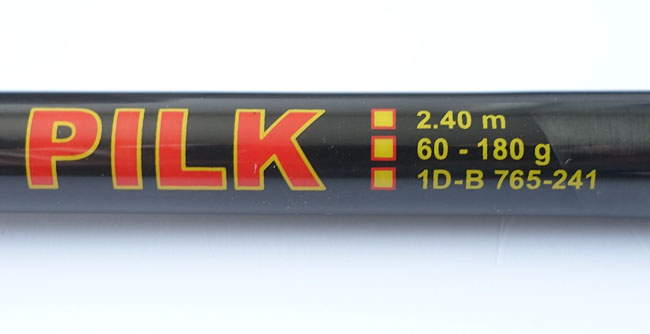
These data are not standardized – but they are good to use as a guide. For example, to check whether the baits used (including the expected catches) fit the respective rod type. A tip rod for whitefish with a casting weight of 2 – 15 g and a tip action would be completely unsuitable for carp fishing, for example.
The CW specifications assume that the rod can cast the specified values with its bending curve and load capacity. In practice, however, you should rather deduct 20% to get to the ideal CW. From this you can subsequently derive for which types of fishing (and which fish) the part is suitable. I will explain how this works with three examples. For a complete overview you can refer to the tables below.
Which is the best fishing rod?
In the following we have listed a few examples of good fishing rods (including their casting weights) for you.
Example 1: Ground fishing on carp in a lake from the shore.

Let’s say I’m looking for a rod for bottom fishing for heavy carp. Here we are talking about decent casting distances and bait weights of 60 up to 80 g (groundbait with boilies, corn line or pieces of cheese). A two- to three-piece plug rod of 3.50 – 3.90 m length with a 3-lbs test curve (explanation below), which has a moderate parabolic or progressive action, would fit the bill. I would personally prefer the latter to achieve good aiming accuracy with the feed line applied.
Example 2: Walleye rod for fishing with dead bait fish at my home water dam (also from the shore).

Large casts are not necessary, as walleye tend to hunt in the schools of small fish near the shore. Lead weight as light as possible (7.5 – 10 g). Small baitfish such as minnow, small roach or small ruffe. Walleye can be expected up to a size of several kilograms. My choice: A plug rod with
- a length of 2.70 – 3.30 m,
- a CW of 10-40 g,
- a moderate tip action and
- a fast, sensitive blank.
Example 3: Spinning rod for pike (also from the shore).

Here the requirements are: Artificial pike bait up to 60 g and stagnant or wide flowing waters. With these specifications, you definitely have to compromise on the rod length.
- For standing waters, I would prefer rods up to 2.70 m with moderate tip action or progressive action.
- For large flowing waters it may be longer, because the pike must be led sometimes in the current area and on longer distances. In addition, the stop sometimes makes a large lever necessary. Here, 3.30 m would be the upper limit.
However, you must be aware that the CW specifications are orientation aids – and not grid dimensions that can be used to sort rods into boxes. In addition, the boundaries are seamless, as you can see with the zander rod in the example.
4.1 What does the indication LBS on a fishing rod mean?
For boat and carp rods there are usually no CW values. Here, the manufacturers use data on the rod test curve. The unit of measurement is the English pound (1 lbs = 453.6 g).
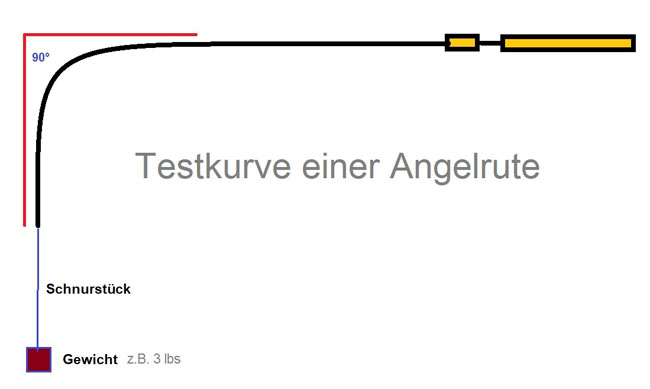
This data is more comparable, as the value provides information about the pull weight at which the rod tip points perpendicular to the rod curve when the rod is in a horizontal position.
- So for a heavy carp rod with a test curve of 3.5 lbs, it would take 3.5 x 453.6 g = 1587.6 g (1.6 kg) to reach this condition.
- With a boat rod of 30 lbs it would be already 30 x 453.6 g = 13608 g (13.6 kg).
If you want to know the approximate CW of the carp rod just mentioned, then you can do this by using the formula 3.5 (lbs) x 453.6 (g) : 16 = 99.225 (g). This leads to a value of about 100 g in this case, which is quite consistent with the rod type. As an ideal CW, a deduction of 20% would result in a value of 80 g.
4.2 The weight specifications in fly fishing
Fly rods, in turn, follow the AFTMA standard classification for fly lines. Since fly fishing involves casting with the weight of the line, line weight and rod type must be matching. The AFTMA class indicates the weight of the first 10 yards (9.14 m) of the fly line. For a Class 4 line (light trout and grayling fishing), the first 10 yards weigh 7.8 grams. For two-handed salmon fishing with class 9, it are already 15.6 g.

5. What is there to consider in terms of equipment?
We have already discussed the most important characteristics for the selection of a good fishing rod, such as the properties of the blank. But there is a lot more in terms of equipment that you should consider when making your purchase decision. Rod grips and reel seats are just as much a part of this as the barrel rings, their winding and the varnish.
-

The Ultimate Fish Finder Guide
Download 40 pages for free now
Reviews ( 17 )
- Rated 5 out of 5
Raphaël G
Very effective. - Rated 5 out of 5
Vladimir M
The book describes the fish finder physics and builds up your understanding of how it actually works. I have yet to apply this knowledge with my Humminbird, but having that much of theory is extremely helpful in understanding and processing the sonar output. - Rated 5 out of 5
NICHOLAS JOHN REECY
The Deeper Guide was just what I was looking for. YouTube is full of reviews of the sonar but little in the way of education. I highly recommend for those wanting to better understand their Deeper sonar. - Rated 5 out of 5
Henrik
I am a beginner when it comes to fishing with fish finders. For me, the book has been very informative to judge the displays on the fish finder “realistically” and to recognize what limits there are when searching for fish with the fish finder. Now I know when I have to use my regular sonar and when I have to use my ClearVü or which settings I should apply to the device at which spot. I was impressed by the many illustrations, especially for understanding the functions. - Rated 5 out of 5
Dr. Manfred Marx
Very well written, so that it is understandable even for amateurs and structured concisely. - Rated 5 out of 5
Andreas Witz
An excellent book for learning about fish finders. - Rated 5 out of 5
AK
The ultimate fish finder guide is a beneficial introduction. I am excited to put into practice what I have learned. - Rated 5 out of 5
Lübbe Wolfgang
A well-written problem solver. - Rated 5 out of 5
Kalksee
The book is unmatched for understanding how a sonar/fish finder works. I was a fish arch hunter, and I suspect my fishing tactics will change. The book has clear writing, and you understand you understand a lot the first time you read it. I can only recommend it to anyone interested in technology. Thank you for this fantastic book! Thoralf - Rated 5 out of 5
Enrico Indelicato
I had absolutely no idea about fish finders. Since I read the book, I had a real Aha experience! For me, as a beginner, very detailed and uncomplicated explained. I can only recommend it! Best regards Enrico - Rated 5 out of 5
Udo
Reading this book has suddenly made my fish finders much more valuable to me! I realized that I made typical mistakes in interpreting the images, which I will now avoid. The authors use clear, understandable language and also explain the mathematical-physical basics very well. The fact that there is no advertising for one or another fish finder manufacturer has increased its credibility. At the same time, you get a solid impression of what is feasible today on this subject – and the “advertisements” of the manufacturers also helped. The book is ABSOLUTELY to recommend, because what good is an expensive fish finder if you too often draw the wrong conclusions from the obtained illustrations? In this respect, the money for the book is very well invested. - Rated 5 out of 5
Josef Weiss
I had to wait a long time for such great explanations. Thank you. - Rated 5 out of 5
Peter
It is a well-described, scientifically sound book highly recommended to anyone who wants to advance and doesn’t already know everything. - Rated 5 out of 5
Holger Just
Ich angle seit Jahren mit Echolot. Aber erstens bleibt man da irgendwann auf einer bestimmten Verständnisstufe stehen, diese konnte ich durch dieses Buch um einiges anheben. Als zweiten Aspekt mußte ich nach dem Lesen dieses Buches erkennen, dass ich durch “gefährliches Halbwissen” jahrelang Fehlinterpretationen hatte bzw. die Möglichkeiten meines Lotes nie richtig ausgenutzt habe. Also mein Fazit : Sehr empfehlenswert, die komplexen Zusammenhänge sind verständlich beschrieben. Das Buch ist ideal geeignet um sich in der angelfreien Zeit wertvolles Wissen für die folgende Saison anzueignen und beim Thema Echolot wieder uptodate zu sein. - Rated 5 out of 5
Matthias Wappler
Sehr gut!! - Rated 5 out of 5
M. Hermanns
Wer dieses Buch nicht liest, ist selber Schuld! Kein Vortrag, kein Presseartikel oder Bericht, Nein sogar keine Online-Schulung oder gar ein 365 Tage Support, vermittelt so viele essentielle Kenntnisse, wie dieses Buch. Nach zwei drei bebilderten Erklärungen wird dir klar, das ohne dieses Wissen, die Gewinn bringende Nutzung eines Echolotes gar nicht möglich ist. Beziehungsweise dir wird klar das du dein Echolot bisher sehr ineffizient genutzt hast und das dir eine Menge verborgen geblieben ist. Ich habe nach dem ersten gleich drei weitere Exemplare gekauft und drei guten Angelfreunden eine Anerkennung für unsere Freundschaft mit diesem Buch gemacht. Alle drei verfügen über 30 Jahre Bootsangelerfahrung und alle drei waren ebenfalls begeistert, jeder konnte sein Wissen deutlich erweitern. Deshalb freue ich mich auch so sehr auf das Zanderbuch welches hoffentlich noch vor dem Wochenende bei mir ist. Liebe Grüße weiter so. dermarc - Rated 5 out of 5
TACKLEFEVER
Das Buch beginnt mit rund 15 Seiten Technik Erläuterung bei der versierte Echolot Nutzer, zu denen ich mich zähle, vielleicht geneigt sind weiter zu blättern weil sie vieles schon wissen und Anfänger weiter blättern möchten weil es zu trocken scheint. Aber etwas Basiswissen gehört einfach dazu. Selbst wenn man als Anfänger bei der Basis Theorie weiter blättern will, sobald es um Chirp geht sollte “jeder” genauer hinschauen 😉 es lohnt sich. Und auch für mich fand ich noch ein zwei kleine Dinge die ich nicht wusste oder noch nicht im Zusammenhang mit anderem sah. Die weiteren Abschnitte (bis Kap. 3) befassen sich mit den verschiedenen Techniken der Geber, Bildschirme, oder dem Smartphone, dem Tablet als Anzeigemedium. Was mir bis dahin sehr positiv auffiel waren die “MERKE-Boxen”, kleine übersichtliche Passagen welche Kerninformationen des zuvor vermittelten Wissen zusammenfassend hervorheben. Auch wenn man nicht alles komplett verstanden hat, hilft diese leicht verständliche Zusammenfassung des voraus gegangenen Inhalts sehr. Kapitel 4 geht auf 2D, Down-Imaging, Side-Scan-Sonar ein, dabei ohne zu konkret auf einen Hersteller abzustellen was ich ebenfalls sehr positiv fand. Dem Angler wird der praktische Einsatz und das Verstehen dessen was man auf dem Echolot sieht erläutert. Fragen wie z.B.: Wo befindet sich der Fisch genau? Was ist eine Fischsichel? Wie setze ich das Echolot beim Vertikalangeln ein? Warum gibt es Vertiefungen obwohl man keine sieht und umgekehrt? Wie erkenne ich die Bodenbeschaffenheit? Fragen zur richtigen Deutung der Unterwasserstruktur, dem optimalen Bildlauf- und Boots- Geschwindigkeit, der Sprungschicht, usw. werden auch beantwortet. Würde ich alles aufzählen würde es hier zu weit führen. Es folgen noch kurze Infos zur Multibeam Technik und ein Kapitel “Die 3D Show mit Garmins Panoptix”. Hier wurde für mich zu wenig Wissen vermittelt, nur auf einen Herstellers gezeigt und nicht auf ähnliche Funktionen oder Techniken anderer Hersteller Bezug genommen. Ich hoffe es kommt in der nächsten Auflage mehr zu dem Thema. Am Ende des Buches kommen Infos rund um konkrete Einstellungen am Echolot. Hier wird einer der wichtigsten Punkte überhaupt behandelt und dies praxisnah und hilfreich. Aller spätestens jetzt lohnt sich das Buch für alle Neueinsteiger. Viel einfacher und kompakter geht es kaum. Ein paar wichtige zuvor besprochene Punkte zu Einstellungen bei bestimmten Echolot Funktionen werden erläutert und mit Checklisten im Kapitel “Die effektivsten Einstellungen beim Echolot auf einen Blick” zusammen gefasst. Hier lohnt es sich für Anfänger die Seiten besonders aufmerksam zu lesen und vielleicht als Kopie mit auf Boot zu nehmen. Damit fällt der Kampf mit den gefühlten tausenden von Einstellungen am Echolot auf dem Wasser leichter. Es klingt fast zu schön um wahr zu sein, aber tatsächlich scheint mir das Buch für Anfänger und Fortgeschrittene Anwender gleichermaßen gut geeignet zu sein. Manchmal suchte ich mehr Hintergrundwissen, weil der im Prinzip sehr gute Ansatz es für Anfänger leicht verständlich zu halten manche Herstellerabhängige Feinheiten außer Acht lässt. Das Buch hat eine gute Gliederung, fasst vieles kompakt zusammen und geht bei wichtigen Punkten auch meist für Fortgeschrittene etwas in die Tiefe. So richtet sich das Buch meiner Meinung nach nicht an wissenschaftliche Anwender, sondern an Echolot Neulinge indem es auch viele Basis Fragen beantwortet ebenso auch an Fortgeschrittene indem es auf diverse Punkte tiefer eingeht. Wenn ich den Sinn des Buches in einem Satz beschreiben sollte, dann wäre dies: Echolottechnik für Anfänger interessant und verständlich erklären und dabei auch ein wenig tieferes Wissen für alle zu vermitteln. Mir ist Stand Juni 2017 kein anderes Buch bekannt das diesen Ansatz so konsequent verfolgt. Ich hoffe ihr habt so viel Spaß beim lesen wie ich. Luke www.tacklefever.de
5.1 Handle and roll holder
When it comes to rod grips, opinions differ as to whether it always has to be cork – or whether an EVA grip (similar to neoprene) is the better solution. We personally prefer to work with cork grips, not only for the sake of quality.

Cork is also more sympathetic to handling in cold and wet conditions. The handle length and shape is a matter of personal preferences, but of course plays a role for the rod weight. For us, the handle can have a bit more length, especially above the reel foot it is sometimes a bit tight for our taste.
For the reel seat, the decision plastic or metal is largely dependent on the weight class. For powerful rods for heavy fishing it should be metal for load reasons, for all the others plastic is a sufficient basis. You should always pay attention to quality with this component, as a defective reel seat will result in high repair costs. With a reel seat from Fuji or Shimano you are always on the safe side.
5.2 Rod guide rings
Among the most important equipment details for us are the rod guides. Here, one can’t be sophisticated enough. In other words, every additional euro you spend on quality barrel rings is money well spent.
Tungsten carbide designs without inserts are no longer part of the inventory, even for inexpensive rods. When it comes to line guides, you may basically demand rings with a hard insert such as Hardloy or, better, SIC or carbide, which can also handle braided lines without causing corrugation.
Unfortunately, the specification “SIC rings” alone reveals nothing about the quality of the product. Experience shows that there exist great differences in serviceability. Bent tip rings due to insufficiently stable bars are just as much a part of this as inserts that have fallen out, cracked and broken – or even rust on the stainless steel frame, which should actually be rustproof.

Here, too, it is worth looking for the more expensive Fuji SIC rings. In addition, the ring design and ring function must be adapted to the particular rod.
- Single footed guides belong on light flexible rods.
- Sturdy guides with two foots fit rods for heavy fishing.
- Widely spaced spinning guides are ideal for fine lines and match rods.
- Those who go for the really big fish in saltwater won’t do so without rod guides, at least in the tip area.
5.3 Ring bindings and varnishing
The color design of the rod guide binding is a matter of taste. It is more important that the rings are neatly wound and do not wobble in any direction. To protect the blank, especially under load, it also makes sense to underwind the rings.
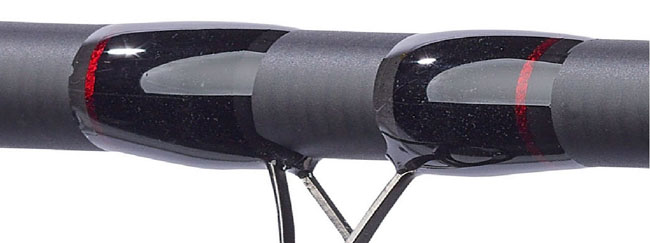
For this purpose, binding yarn is first applied to the expected pressure points, and then the rod guides is placed on this yarn ( underwrap) and overwrapped. Before varnishing the bindings, the manufacturer always applies a color preservative on the bindings of quality rods so that the color intensity of the yarn is not lost by the UV light. Only then do the bindings receive a colorless final coating, usually twice.
6. How much does a decent fishing pole cost?
Carbon fiber is generally more expensive than glass, while Kevlar and especially titanium are more expensive than carbon. If the blank is mass-produced in large quantities, the price difference in the starting material plays a role. Especially if high-quality carbon material is used and special additional wraps (e.g.) with titanium threads are incorporated.
Small blank series with high development costs or manufacturing processes with a lot of manual work also put pressure on the price calculation. The less a fishing rod mutates into a mass-produced standard model, the more it will impact your fishing budget. Of course, we all know that not every product is automatically worth the money. But a rod twice as expensive may well have its price, if it is worth it.
The angler as a buyer is the measure of all things in the end. He alone determines whether the model for his preferred types of fishing and habits completely meets his expectations, no one else. And he also decides whether the quality features of the rod meet his requirements. Experience shows, however, that cheap models are often very quickly replaced by more expensive ones, because the fishing pleasure of the cheapsters (under 60 euros) is very limited.
In the middle rod price classes (60 – 150 euros) you can usually already find what you are looking for. On the one hand, the selection is the largest here – and on the other hand, all the quality features of a good utility rod are already basically available in this price range.
As in many other areas, the last 20% of quality in material use and workmanship are the most expensive in fishing rods. However, anyone who has ever fished with a rod from the upper price segment (from 150 euros on), will probably find himself going thorugh this segment when buying a new rod. After all, in the end quality always convinces.

6.1 What characterizes the best fishing rods?
Rods from the upper price segment score at first glance with their flawless appearance:
- With a seamless varnish,
- a design-oriented finish on the twine and
- the end caps above and below the handle.
If cork has also been used, you can look in vain for holes smeared with wood putty, which are otherwise unfortunately often the rule. Selected fine-pored Portuguese cork should have been used here. The rings come from the quality shelf of a well-known manufacturer, the reel seat usually comes from the same producer.
The ring distribution and the gradation of the ring sizes are very finely balanced so that the cord fits harmoniously into the bending curve when tensioned. Without the line between the rings reminding you of a clothesline. This can happen with inexpensive rods with unfavorable ring spacing.
For the production of blanks, carbon is usually processed in a high quality level, which promises high break resistance through the incorporation of additional threads made of other materials (e.g. titanium, kevlar). This is especially noticeable when using cross windings. What is always astonishing – but only noticeable when you mount a suitable reel – is, in addition to the light weight, the balance of such a rod in the hand.
Nothing is more annoying during hours of flasher fishing than a top-heavy tackle. Unfortunately, rod balance in the angler’s hand is a matter of fine-tuning of the final product. And that, in turn, is almost a unique selling point of the upper price range. Only, those who have not yet had such a rod in their hands will not be able to make a comparison with their own fishing tools – and thus perhaps not expect more.
-

The Ultimate Fish Finder Guide
Download 40 pages for free now
Reviews ( 17 )
- Rated 5 out of 5
Raphaël G
Very effective. - Rated 5 out of 5
Vladimir M
The book describes the fish finder physics and builds up your understanding of how it actually works. I have yet to apply this knowledge with my Humminbird, but having that much of theory is extremely helpful in understanding and processing the sonar output. - Rated 5 out of 5
NICHOLAS JOHN REECY
The Deeper Guide was just what I was looking for. YouTube is full of reviews of the sonar but little in the way of education. I highly recommend for those wanting to better understand their Deeper sonar. - Rated 5 out of 5
Henrik
I am a beginner when it comes to fishing with fish finders. For me, the book has been very informative to judge the displays on the fish finder “realistically” and to recognize what limits there are when searching for fish with the fish finder. Now I know when I have to use my regular sonar and when I have to use my ClearVü or which settings I should apply to the device at which spot. I was impressed by the many illustrations, especially for understanding the functions. - Rated 5 out of 5
Dr. Manfred Marx
Very well written, so that it is understandable even for amateurs and structured concisely. - Rated 5 out of 5
Andreas Witz
An excellent book for learning about fish finders. - Rated 5 out of 5
AK
The ultimate fish finder guide is a beneficial introduction. I am excited to put into practice what I have learned. - Rated 5 out of 5
Lübbe Wolfgang
A well-written problem solver. - Rated 5 out of 5
Kalksee
The book is unmatched for understanding how a sonar/fish finder works. I was a fish arch hunter, and I suspect my fishing tactics will change. The book has clear writing, and you understand you understand a lot the first time you read it. I can only recommend it to anyone interested in technology. Thank you for this fantastic book! Thoralf - Rated 5 out of 5
Enrico Indelicato
I had absolutely no idea about fish finders. Since I read the book, I had a real Aha experience! For me, as a beginner, very detailed and uncomplicated explained. I can only recommend it! Best regards Enrico - Rated 5 out of 5
Udo
Reading this book has suddenly made my fish finders much more valuable to me! I realized that I made typical mistakes in interpreting the images, which I will now avoid. The authors use clear, understandable language and also explain the mathematical-physical basics very well. The fact that there is no advertising for one or another fish finder manufacturer has increased its credibility. At the same time, you get a solid impression of what is feasible today on this subject – and the “advertisements” of the manufacturers also helped. The book is ABSOLUTELY to recommend, because what good is an expensive fish finder if you too often draw the wrong conclusions from the obtained illustrations? In this respect, the money for the book is very well invested. - Rated 5 out of 5
Josef Weiss
I had to wait a long time for such great explanations. Thank you. - Rated 5 out of 5
Peter
It is a well-described, scientifically sound book highly recommended to anyone who wants to advance and doesn’t already know everything. - Rated 5 out of 5
Holger Just
Ich angle seit Jahren mit Echolot. Aber erstens bleibt man da irgendwann auf einer bestimmten Verständnisstufe stehen, diese konnte ich durch dieses Buch um einiges anheben. Als zweiten Aspekt mußte ich nach dem Lesen dieses Buches erkennen, dass ich durch “gefährliches Halbwissen” jahrelang Fehlinterpretationen hatte bzw. die Möglichkeiten meines Lotes nie richtig ausgenutzt habe. Also mein Fazit : Sehr empfehlenswert, die komplexen Zusammenhänge sind verständlich beschrieben. Das Buch ist ideal geeignet um sich in der angelfreien Zeit wertvolles Wissen für die folgende Saison anzueignen und beim Thema Echolot wieder uptodate zu sein. - Rated 5 out of 5
Matthias Wappler
Sehr gut!! - Rated 5 out of 5
M. Hermanns
Wer dieses Buch nicht liest, ist selber Schuld! Kein Vortrag, kein Presseartikel oder Bericht, Nein sogar keine Online-Schulung oder gar ein 365 Tage Support, vermittelt so viele essentielle Kenntnisse, wie dieses Buch. Nach zwei drei bebilderten Erklärungen wird dir klar, das ohne dieses Wissen, die Gewinn bringende Nutzung eines Echolotes gar nicht möglich ist. Beziehungsweise dir wird klar das du dein Echolot bisher sehr ineffizient genutzt hast und das dir eine Menge verborgen geblieben ist. Ich habe nach dem ersten gleich drei weitere Exemplare gekauft und drei guten Angelfreunden eine Anerkennung für unsere Freundschaft mit diesem Buch gemacht. Alle drei verfügen über 30 Jahre Bootsangelerfahrung und alle drei waren ebenfalls begeistert, jeder konnte sein Wissen deutlich erweitern. Deshalb freue ich mich auch so sehr auf das Zanderbuch welches hoffentlich noch vor dem Wochenende bei mir ist. Liebe Grüße weiter so. dermarc - Rated 5 out of 5
TACKLEFEVER
Das Buch beginnt mit rund 15 Seiten Technik Erläuterung bei der versierte Echolot Nutzer, zu denen ich mich zähle, vielleicht geneigt sind weiter zu blättern weil sie vieles schon wissen und Anfänger weiter blättern möchten weil es zu trocken scheint. Aber etwas Basiswissen gehört einfach dazu. Selbst wenn man als Anfänger bei der Basis Theorie weiter blättern will, sobald es um Chirp geht sollte “jeder” genauer hinschauen 😉 es lohnt sich. Und auch für mich fand ich noch ein zwei kleine Dinge die ich nicht wusste oder noch nicht im Zusammenhang mit anderem sah. Die weiteren Abschnitte (bis Kap. 3) befassen sich mit den verschiedenen Techniken der Geber, Bildschirme, oder dem Smartphone, dem Tablet als Anzeigemedium. Was mir bis dahin sehr positiv auffiel waren die “MERKE-Boxen”, kleine übersichtliche Passagen welche Kerninformationen des zuvor vermittelten Wissen zusammenfassend hervorheben. Auch wenn man nicht alles komplett verstanden hat, hilft diese leicht verständliche Zusammenfassung des voraus gegangenen Inhalts sehr. Kapitel 4 geht auf 2D, Down-Imaging, Side-Scan-Sonar ein, dabei ohne zu konkret auf einen Hersteller abzustellen was ich ebenfalls sehr positiv fand. Dem Angler wird der praktische Einsatz und das Verstehen dessen was man auf dem Echolot sieht erläutert. Fragen wie z.B.: Wo befindet sich der Fisch genau? Was ist eine Fischsichel? Wie setze ich das Echolot beim Vertikalangeln ein? Warum gibt es Vertiefungen obwohl man keine sieht und umgekehrt? Wie erkenne ich die Bodenbeschaffenheit? Fragen zur richtigen Deutung der Unterwasserstruktur, dem optimalen Bildlauf- und Boots- Geschwindigkeit, der Sprungschicht, usw. werden auch beantwortet. Würde ich alles aufzählen würde es hier zu weit führen. Es folgen noch kurze Infos zur Multibeam Technik und ein Kapitel “Die 3D Show mit Garmins Panoptix”. Hier wurde für mich zu wenig Wissen vermittelt, nur auf einen Herstellers gezeigt und nicht auf ähnliche Funktionen oder Techniken anderer Hersteller Bezug genommen. Ich hoffe es kommt in der nächsten Auflage mehr zu dem Thema. Am Ende des Buches kommen Infos rund um konkrete Einstellungen am Echolot. Hier wird einer der wichtigsten Punkte überhaupt behandelt und dies praxisnah und hilfreich. Aller spätestens jetzt lohnt sich das Buch für alle Neueinsteiger. Viel einfacher und kompakter geht es kaum. Ein paar wichtige zuvor besprochene Punkte zu Einstellungen bei bestimmten Echolot Funktionen werden erläutert und mit Checklisten im Kapitel “Die effektivsten Einstellungen beim Echolot auf einen Blick” zusammen gefasst. Hier lohnt es sich für Anfänger die Seiten besonders aufmerksam zu lesen und vielleicht als Kopie mit auf Boot zu nehmen. Damit fällt der Kampf mit den gefühlten tausenden von Einstellungen am Echolot auf dem Wasser leichter. Es klingt fast zu schön um wahr zu sein, aber tatsächlich scheint mir das Buch für Anfänger und Fortgeschrittene Anwender gleichermaßen gut geeignet zu sein. Manchmal suchte ich mehr Hintergrundwissen, weil der im Prinzip sehr gute Ansatz es für Anfänger leicht verständlich zu halten manche Herstellerabhängige Feinheiten außer Acht lässt. Das Buch hat eine gute Gliederung, fasst vieles kompakt zusammen und geht bei wichtigen Punkten auch meist für Fortgeschrittene etwas in die Tiefe. So richtet sich das Buch meiner Meinung nach nicht an wissenschaftliche Anwender, sondern an Echolot Neulinge indem es auch viele Basis Fragen beantwortet ebenso auch an Fortgeschrittene indem es auf diverse Punkte tiefer eingeht. Wenn ich den Sinn des Buches in einem Satz beschreiben sollte, dann wäre dies: Echolottechnik für Anfänger interessant und verständlich erklären und dabei auch ein wenig tieferes Wissen für alle zu vermitteln. Mir ist Stand Juni 2017 kein anderes Buch bekannt das diesen Ansatz so konsequent verfolgt. Ich hoffe ihr habt so viel Spaß beim lesen wie ich. Luke www.tacklefever.de
7. What types of fishing rods do exist?

In this chapter we have compiled an overview of
- the most important types of rods,
- their characteristic features, as well as
- their advantages and disadvantages.
We want to start with the different rod shapes, namely the
7.1 Plug-in rods
In a plug-in rod, the individual segments (each with a length of 80 – 200 cm) are plugged together to form a complete fishing rod. This reduces the transport and storage length to the segment length. In a plug-in rod, as already mentioned, the individual segments are relatively long, which means that the action and load capacity (including the number of line rings) are usually better than in a telescopic rod.
7.2 Telescopic rods
With a telescopic fishing rod, the individual segments (50 – 100 cm) can be pushed into each other to reduce the overall length to the transport and storage length. The action and load capacity of a telescopic rod is usually not as good as that of a plug-in rod. Not only, but also because the number of line rod guides is limited to the number of segments. It was invented by the American fly fishing expert Charles Ritz.
7.3 Spinning rods
Spinning rods are the most common type of rod, which consequently can be found in the hands of anglers of all experience levels. A spinning reel is attached to the underside of the rod, making it a very versatile rod and reel combination. Spinning rods allow their users to hold them with the main hand for more stability and power.
The reel is at the bottom of the rod as you cast and retrieve. The operation is relatively simple: it is only important that it is not too heavy, because you constantly hold it in your hand and have to move it a lot. In addition, you should pay more attention to the quality of the rings, because they are heavily used. Otherwise, poor workmanship can quickly lead to failure of the rings or damage to the line.
Spinning rods are available in all sizes, making them suitable for almost any fishing situation. A distinction is made between ultra-light and extra-heavy models – including all intermediate levels. However, this designation does not refer to the weight of the rod itself, but to its casting weight. The gradations are:
- Ultralight spinning rods with 0.5 – 12 g casting weight. Suitable, for example, for fishing for perch and trout.
- Lightweight spinning rods with 5 – 25 g casting weight. Also suitable for trout and perch, and partly for fishing for pike.
- Medium weight spinning rods with 30 – 80 g casting weight. Suitable for large trout and pike
- Heavy spinning rods with 90 – 200 g casting weight. Suitable for pike.
- Extra heavy spinning rods with 200 g + casting weight. Suitable for catfish.
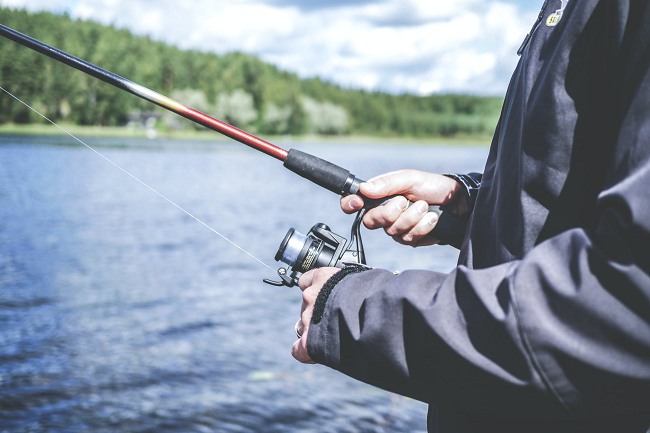
7.4 Pole rod
A pole rod is a particularly long fishing rod without a reel. An equally long leader with float, lead and hook is then attached to it. The line is usually just as long as the rod itself – a shorter line can also be used with plug-in rod variants.
Fishing is usually done with natural bait for whitefish. The exception to this is tip fishing with an artificial fly. Thus, this type of rod corresponds most closely to the classic worm-rod cliché.
There are two types of pole rods:
- The ringed pole rod in the strict sense.
- The unringed head rod – which in turn is available as a telescopic (up to 10 m in length) and as a plug variant (up to 16 m).
Such long lengths are achieved by using particularly light and at the same time resistant materials. These include, for example, plastics with carbon fiber (CFRP).
Essential when fishing with the unringed version is an elastic, to which the line is hooked by means of a connector, in order to be able to tire a stronger fish without “giving line”. Another advantage is that its deflections are cushioned by the rubber. This gives realistic chances of safely landing capital catches even with very thin main and leader lines. The strength of the elastic is therefore selected depending on the line strength and target fish.
7.4.1 What is a Bolognese rod?
A Bolognese rod is a special type of pole rod with highly protruding rope guides and a reel seat for a stationary reel. The length of such a rod is five to eight meters. This type of rod is mostly used for fishing at a distance (from the shore) in wide flowing waters. It allows not only a very controlled, active float guidance – in addition, the reel brake can be used to react directly to escapes.
-

The Ultimate Fish Finder Guide
Download 40 pages for free now
Reviews ( 17 )
- Rated 5 out of 5
Raphaël G
Very effective. - Rated 5 out of 5
Vladimir M
The book describes the fish finder physics and builds up your understanding of how it actually works. I have yet to apply this knowledge with my Humminbird, but having that much of theory is extremely helpful in understanding and processing the sonar output. - Rated 5 out of 5
NICHOLAS JOHN REECY
The Deeper Guide was just what I was looking for. YouTube is full of reviews of the sonar but little in the way of education. I highly recommend for those wanting to better understand their Deeper sonar. - Rated 5 out of 5
Henrik
I am a beginner when it comes to fishing with fish finders. For me, the book has been very informative to judge the displays on the fish finder “realistically” and to recognize what limits there are when searching for fish with the fish finder. Now I know when I have to use my regular sonar and when I have to use my ClearVü or which settings I should apply to the device at which spot. I was impressed by the many illustrations, especially for understanding the functions. - Rated 5 out of 5
Dr. Manfred Marx
Very well written, so that it is understandable even for amateurs and structured concisely. - Rated 5 out of 5
Andreas Witz
An excellent book for learning about fish finders. - Rated 5 out of 5
AK
The ultimate fish finder guide is a beneficial introduction. I am excited to put into practice what I have learned. - Rated 5 out of 5
Lübbe Wolfgang
A well-written problem solver. - Rated 5 out of 5
Kalksee
The book is unmatched for understanding how a sonar/fish finder works. I was a fish arch hunter, and I suspect my fishing tactics will change. The book has clear writing, and you understand you understand a lot the first time you read it. I can only recommend it to anyone interested in technology. Thank you for this fantastic book! Thoralf - Rated 5 out of 5
Enrico Indelicato
I had absolutely no idea about fish finders. Since I read the book, I had a real Aha experience! For me, as a beginner, very detailed and uncomplicated explained. I can only recommend it! Best regards Enrico - Rated 5 out of 5
Udo
Reading this book has suddenly made my fish finders much more valuable to me! I realized that I made typical mistakes in interpreting the images, which I will now avoid. The authors use clear, understandable language and also explain the mathematical-physical basics very well. The fact that there is no advertising for one or another fish finder manufacturer has increased its credibility. At the same time, you get a solid impression of what is feasible today on this subject – and the “advertisements” of the manufacturers also helped. The book is ABSOLUTELY to recommend, because what good is an expensive fish finder if you too often draw the wrong conclusions from the obtained illustrations? In this respect, the money for the book is very well invested. - Rated 5 out of 5
Josef Weiss
I had to wait a long time for such great explanations. Thank you. - Rated 5 out of 5
Peter
It is a well-described, scientifically sound book highly recommended to anyone who wants to advance and doesn’t already know everything. - Rated 5 out of 5
Holger Just
Ich angle seit Jahren mit Echolot. Aber erstens bleibt man da irgendwann auf einer bestimmten Verständnisstufe stehen, diese konnte ich durch dieses Buch um einiges anheben. Als zweiten Aspekt mußte ich nach dem Lesen dieses Buches erkennen, dass ich durch “gefährliches Halbwissen” jahrelang Fehlinterpretationen hatte bzw. die Möglichkeiten meines Lotes nie richtig ausgenutzt habe. Also mein Fazit : Sehr empfehlenswert, die komplexen Zusammenhänge sind verständlich beschrieben. Das Buch ist ideal geeignet um sich in der angelfreien Zeit wertvolles Wissen für die folgende Saison anzueignen und beim Thema Echolot wieder uptodate zu sein. - Rated 5 out of 5
Matthias Wappler
Sehr gut!! - Rated 5 out of 5
M. Hermanns
Wer dieses Buch nicht liest, ist selber Schuld! Kein Vortrag, kein Presseartikel oder Bericht, Nein sogar keine Online-Schulung oder gar ein 365 Tage Support, vermittelt so viele essentielle Kenntnisse, wie dieses Buch. Nach zwei drei bebilderten Erklärungen wird dir klar, das ohne dieses Wissen, die Gewinn bringende Nutzung eines Echolotes gar nicht möglich ist. Beziehungsweise dir wird klar das du dein Echolot bisher sehr ineffizient genutzt hast und das dir eine Menge verborgen geblieben ist. Ich habe nach dem ersten gleich drei weitere Exemplare gekauft und drei guten Angelfreunden eine Anerkennung für unsere Freundschaft mit diesem Buch gemacht. Alle drei verfügen über 30 Jahre Bootsangelerfahrung und alle drei waren ebenfalls begeistert, jeder konnte sein Wissen deutlich erweitern. Deshalb freue ich mich auch so sehr auf das Zanderbuch welches hoffentlich noch vor dem Wochenende bei mir ist. Liebe Grüße weiter so. dermarc - Rated 5 out of 5
TACKLEFEVER
Das Buch beginnt mit rund 15 Seiten Technik Erläuterung bei der versierte Echolot Nutzer, zu denen ich mich zähle, vielleicht geneigt sind weiter zu blättern weil sie vieles schon wissen und Anfänger weiter blättern möchten weil es zu trocken scheint. Aber etwas Basiswissen gehört einfach dazu. Selbst wenn man als Anfänger bei der Basis Theorie weiter blättern will, sobald es um Chirp geht sollte “jeder” genauer hinschauen 😉 es lohnt sich. Und auch für mich fand ich noch ein zwei kleine Dinge die ich nicht wusste oder noch nicht im Zusammenhang mit anderem sah. Die weiteren Abschnitte (bis Kap. 3) befassen sich mit den verschiedenen Techniken der Geber, Bildschirme, oder dem Smartphone, dem Tablet als Anzeigemedium. Was mir bis dahin sehr positiv auffiel waren die “MERKE-Boxen”, kleine übersichtliche Passagen welche Kerninformationen des zuvor vermittelten Wissen zusammenfassend hervorheben. Auch wenn man nicht alles komplett verstanden hat, hilft diese leicht verständliche Zusammenfassung des voraus gegangenen Inhalts sehr. Kapitel 4 geht auf 2D, Down-Imaging, Side-Scan-Sonar ein, dabei ohne zu konkret auf einen Hersteller abzustellen was ich ebenfalls sehr positiv fand. Dem Angler wird der praktische Einsatz und das Verstehen dessen was man auf dem Echolot sieht erläutert. Fragen wie z.B.: Wo befindet sich der Fisch genau? Was ist eine Fischsichel? Wie setze ich das Echolot beim Vertikalangeln ein? Warum gibt es Vertiefungen obwohl man keine sieht und umgekehrt? Wie erkenne ich die Bodenbeschaffenheit? Fragen zur richtigen Deutung der Unterwasserstruktur, dem optimalen Bildlauf- und Boots- Geschwindigkeit, der Sprungschicht, usw. werden auch beantwortet. Würde ich alles aufzählen würde es hier zu weit führen. Es folgen noch kurze Infos zur Multibeam Technik und ein Kapitel “Die 3D Show mit Garmins Panoptix”. Hier wurde für mich zu wenig Wissen vermittelt, nur auf einen Herstellers gezeigt und nicht auf ähnliche Funktionen oder Techniken anderer Hersteller Bezug genommen. Ich hoffe es kommt in der nächsten Auflage mehr zu dem Thema. Am Ende des Buches kommen Infos rund um konkrete Einstellungen am Echolot. Hier wird einer der wichtigsten Punkte überhaupt behandelt und dies praxisnah und hilfreich. Aller spätestens jetzt lohnt sich das Buch für alle Neueinsteiger. Viel einfacher und kompakter geht es kaum. Ein paar wichtige zuvor besprochene Punkte zu Einstellungen bei bestimmten Echolot Funktionen werden erläutert und mit Checklisten im Kapitel “Die effektivsten Einstellungen beim Echolot auf einen Blick” zusammen gefasst. Hier lohnt es sich für Anfänger die Seiten besonders aufmerksam zu lesen und vielleicht als Kopie mit auf Boot zu nehmen. Damit fällt der Kampf mit den gefühlten tausenden von Einstellungen am Echolot auf dem Wasser leichter. Es klingt fast zu schön um wahr zu sein, aber tatsächlich scheint mir das Buch für Anfänger und Fortgeschrittene Anwender gleichermaßen gut geeignet zu sein. Manchmal suchte ich mehr Hintergrundwissen, weil der im Prinzip sehr gute Ansatz es für Anfänger leicht verständlich zu halten manche Herstellerabhängige Feinheiten außer Acht lässt. Das Buch hat eine gute Gliederung, fasst vieles kompakt zusammen und geht bei wichtigen Punkten auch meist für Fortgeschrittene etwas in die Tiefe. So richtet sich das Buch meiner Meinung nach nicht an wissenschaftliche Anwender, sondern an Echolot Neulinge indem es auch viele Basis Fragen beantwortet ebenso auch an Fortgeschrittene indem es auf diverse Punkte tiefer eingeht. Wenn ich den Sinn des Buches in einem Satz beschreiben sollte, dann wäre dies: Echolottechnik für Anfänger interessant und verständlich erklären und dabei auch ein wenig tieferes Wissen für alle zu vermitteln. Mir ist Stand Juni 2017 kein anderes Buch bekannt das diesen Ansatz so konsequent verfolgt. Ich hoffe ihr habt so viel Spaß beim lesen wie ich. Luke www.tacklefever.de
7.5 Float rods
A float rod, as the name suggests, is used for fishing with a float. Recommendable for float fishing is, for example, a match rod with a length of 3 to 4.5 m equipped with a stationary reel.
7.6 Bottom fishing rods
Bottom rods – as the name suggests – are used to offer the bait at the bottom of the water. In addition to the feeder or angle picker rods designed specifically for this type of fishing, essentially all simple rod types are suitable for this purpose. In other words, all rods that are not designed for a special type of fishing, which is contrary to bottom fishing. A ground rod is suitable for use with a ground lead or feed basket.
7.7 Jigging Rods
Jigging rods are used for jigging: Fishing with a jig. Such a one usually consists of a lead sinker with a hook worked into it and covered by a body made of a soft material (rubber, etc.) to imitate a prey fish.
Jigs are designed to produce a jerky, vertical motion, just above the bottom – unlike spinners, which move horizontally through the water. The bounce can be created either by raising and lowering the rod, or by retrieving the line with the reel.
Jigging rods are very versatile, working in both saltwater and freshwater, as well as for a variety of fish species. Ideally, they are between 2.5 and 3 m long and have a hard backbone as well as a tip action, so that the jig (such as a particularly tempting pike lure) can be handled optimally.
7.8 Match rods
The match rod takes its name from the word “match” – in this case meaning “competition”. The name therefore already gives an indication of its origin and original purpose: Great Britain and competition fishing – usually for whitefish.
A match fishing rod is primarily designed for float fishing. Although it is possible to land big fish, the goal in match fishing is “small and lots”. With a fast action combined with a low casting weight of 10 – 30 g, the angler can cover long distances with his float. This ensures versatility and the ability to fish a wider range.
A faster action allows the angler to react more quickly to even the smallest bites. This is important to ensure that every dip of the float results in a catch. Match rods therefore usually have an action that is more focused on the tip of the rod. Say it bends only in the upper third. The goal here is to get the line out of the water quickly, which is especially necessary for smaller, faster fish.
The length of a match rod is usually between 3.5 and 4.5 meters. Along its entire length are a large number of rings attached, which makes it possible to use very thin lines. Thus, a match rod is characterized by the following three features:
- Relatively long length,
- tip action and
- dense ringing.
7.9 Boat rods
Boat rods can be spinning rods or casting rods, but they are almost always rather short and stiff. They are mainly used for trolling and vertical fishing. Whether in freshwater or saltwater, the target fish species is diverse and from large to small everything is there.
Popular target fish for fishing from the boat are:
- capital zander,
- big pike,
- catfish,
- perch,
- whitefish,
- salmonids like char, salmon,
- cods,
- cod,
- and, and, and…
A typical boat rod is used for fishing with bait in the drift or at low tide from an anchored boat. It is also usually
- from 2 to 2.4 m long,
- consists of a mixture of carbon and glass fibers and
- has a medium to fast action.

7.9.1 Pilk rod
A special form of boat rods are the pilk rods. With one of these, a paternoster or the eponymous pilker (a heavy type of flasher) is lowered vertically into the water. Depending on the target fish even until completely down to the ground. Once a fish is hooked, it is hoisted aboard by lifting the rod and reeling in the line.
To withstand the heavy loads involved, a pilk rod should have a stiff backbone and measure between 1.6 and 1.9 meters. Rods with a length of 2.1 to 2.4 m are much more unwieldy because they are more top-heavy. In addition, at this length, the law of leverage already has a disadvantageous effect.
7.10 Feeder rods
Feeder fishing rods range from about 2.5 (commonly called “picker rod”) to 3.5 m in length. Feeder rods are equipped with a bait without float used for bottom fishing.
The upper part of the rod is called the quiver tip, which is available in different sizes (thicknesses). Which tip is used depends on the size of the fish being fished for. The type of water can also influence the choice of the quivertip. If you are fishing for big fish like carp, a heavy feeder rod is required.
7.11 Baitcasting rods
A baitcasting rod (or casting rod), is a fishing rod optimized for casting line and bait with a baitcasting reel. The advantages of a baitcaster essentially come from the reel. Not only is the casting distance drastically increased, but also the control over the line and hook – increasing accuracy while casting.
The benefits further range from different casting techniques to increasing the size of the fish caught. Switching from a spinning reel to a casting reel can therefore be worth considering – but you should also be aware of the possible negative consequences. One of these can be irreversible tangling of the fishing line (“birds nest”). Here you have to work with different brake settings.
Beginners start with a stronger brake setting and only when they are confident in targeted casting and the line rarely gets tangled, the brake can be loosened bit by bit. In the end, the pro will be pleased with incredible casting distances.
7.12 Fly rods
A fly rod is a fishing rod designed specifically for fly fishing. Such a rod is usually very light and thin compared to other rods. In addition, the rings are often very small and close to the blank (the rod itself). The reel seat is located at the bottom of the rod – below the handle when the rod is held upright.
The reel is mounted in this location to better maintain balance in the rod. It is also not used to retrieve line like a baitcast or spinning reel. Many fly fishermen pull the line off the reel as soon as they start fishing. And don’t spool it back onto the reel until they are done for the day.
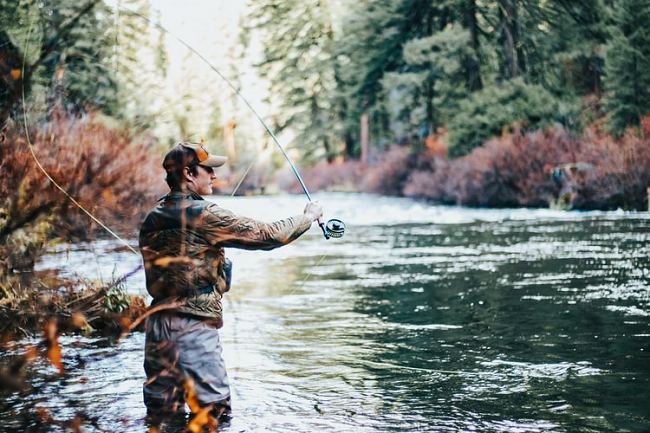
Fly rods, like spinning rods, are classified by the length and weight they are designed to cast. But unlike the latter, it is the weight of the line – not the lure – that is meant. Since it is the line that is instrumental in casting the very light fly, it is also it that requires a suitable rod to cast well.
The rod classes (which are actually line classes) are referred to as AFFTA classes. The former designation was AFTM – and this acronym is still very commonly used. The classes range from 0 (very, very light and quite rare) to about 14 and 15 (very heavy and also quite rare). The rod or line class is sometimes designated by the sign #.
7.13 Sbirolino rods (Bombarda)
Sbirolinos are mainly (but not only) used for trout fishing. They combine a certain casting weight and float, which in its country of origin (Italy) is called Bombarda. With such a rod it is possible to cast even lightweight baits really far.
Long fishing rods between 3.5 and over 4 m are used as sbirolino rods. Thus, not only long leaders can be fished, the hook is also brought through long distances. The long length in combination with a parabolic action also has a positive effect on the casting distance.
The casting weight is usually between 10 and 50 g – and is essentially dependent on the size of the fished water. The fine rod tip ensures optimal bite indication.
7.14 Surf rods
Surf rods are designed to be used for fishing from shore in saltwater or brackish water on coastal beaches and bays. They are long (up to 4.5 m) to allow the angler to make long casts beyond the waves into the surf.
Surf rods are also equipped with a reel that can hold hundreds of feet of coarse fishing line. We recommend a rod length of 2.5 to 3 meters, with a 6000- to 8000-weight reel and braided fishing line of 11 to 22 kg.
-

The Ultimate Fish Finder Guide
Download 40 pages for free now
Reviews ( 17 )
- Rated 5 out of 5
Raphaël G
Very effective. - Rated 5 out of 5
Vladimir M
The book describes the fish finder physics and builds up your understanding of how it actually works. I have yet to apply this knowledge with my Humminbird, but having that much of theory is extremely helpful in understanding and processing the sonar output. - Rated 5 out of 5
NICHOLAS JOHN REECY
The Deeper Guide was just what I was looking for. YouTube is full of reviews of the sonar but little in the way of education. I highly recommend for those wanting to better understand their Deeper sonar. - Rated 5 out of 5
Henrik
I am a beginner when it comes to fishing with fish finders. For me, the book has been very informative to judge the displays on the fish finder “realistically” and to recognize what limits there are when searching for fish with the fish finder. Now I know when I have to use my regular sonar and when I have to use my ClearVü or which settings I should apply to the device at which spot. I was impressed by the many illustrations, especially for understanding the functions. - Rated 5 out of 5
Dr. Manfred Marx
Very well written, so that it is understandable even for amateurs and structured concisely. - Rated 5 out of 5
Andreas Witz
An excellent book for learning about fish finders. - Rated 5 out of 5
AK
The ultimate fish finder guide is a beneficial introduction. I am excited to put into practice what I have learned. - Rated 5 out of 5
Lübbe Wolfgang
A well-written problem solver. - Rated 5 out of 5
Kalksee
The book is unmatched for understanding how a sonar/fish finder works. I was a fish arch hunter, and I suspect my fishing tactics will change. The book has clear writing, and you understand you understand a lot the first time you read it. I can only recommend it to anyone interested in technology. Thank you for this fantastic book! Thoralf - Rated 5 out of 5
Enrico Indelicato
I had absolutely no idea about fish finders. Since I read the book, I had a real Aha experience! For me, as a beginner, very detailed and uncomplicated explained. I can only recommend it! Best regards Enrico - Rated 5 out of 5
Udo
Reading this book has suddenly made my fish finders much more valuable to me! I realized that I made typical mistakes in interpreting the images, which I will now avoid. The authors use clear, understandable language and also explain the mathematical-physical basics very well. The fact that there is no advertising for one or another fish finder manufacturer has increased its credibility. At the same time, you get a solid impression of what is feasible today on this subject – and the “advertisements” of the manufacturers also helped. The book is ABSOLUTELY to recommend, because what good is an expensive fish finder if you too often draw the wrong conclusions from the obtained illustrations? In this respect, the money for the book is very well invested. - Rated 5 out of 5
Josef Weiss
I had to wait a long time for such great explanations. Thank you. - Rated 5 out of 5
Peter
It is a well-described, scientifically sound book highly recommended to anyone who wants to advance and doesn’t already know everything. - Rated 5 out of 5
Holger Just
Ich angle seit Jahren mit Echolot. Aber erstens bleibt man da irgendwann auf einer bestimmten Verständnisstufe stehen, diese konnte ich durch dieses Buch um einiges anheben. Als zweiten Aspekt mußte ich nach dem Lesen dieses Buches erkennen, dass ich durch “gefährliches Halbwissen” jahrelang Fehlinterpretationen hatte bzw. die Möglichkeiten meines Lotes nie richtig ausgenutzt habe. Also mein Fazit : Sehr empfehlenswert, die komplexen Zusammenhänge sind verständlich beschrieben. Das Buch ist ideal geeignet um sich in der angelfreien Zeit wertvolles Wissen für die folgende Saison anzueignen und beim Thema Echolot wieder uptodate zu sein. - Rated 5 out of 5
Matthias Wappler
Sehr gut!! - Rated 5 out of 5
M. Hermanns
Wer dieses Buch nicht liest, ist selber Schuld! Kein Vortrag, kein Presseartikel oder Bericht, Nein sogar keine Online-Schulung oder gar ein 365 Tage Support, vermittelt so viele essentielle Kenntnisse, wie dieses Buch. Nach zwei drei bebilderten Erklärungen wird dir klar, das ohne dieses Wissen, die Gewinn bringende Nutzung eines Echolotes gar nicht möglich ist. Beziehungsweise dir wird klar das du dein Echolot bisher sehr ineffizient genutzt hast und das dir eine Menge verborgen geblieben ist. Ich habe nach dem ersten gleich drei weitere Exemplare gekauft und drei guten Angelfreunden eine Anerkennung für unsere Freundschaft mit diesem Buch gemacht. Alle drei verfügen über 30 Jahre Bootsangelerfahrung und alle drei waren ebenfalls begeistert, jeder konnte sein Wissen deutlich erweitern. Deshalb freue ich mich auch so sehr auf das Zanderbuch welches hoffentlich noch vor dem Wochenende bei mir ist. Liebe Grüße weiter so. dermarc - Rated 5 out of 5
TACKLEFEVER
Das Buch beginnt mit rund 15 Seiten Technik Erläuterung bei der versierte Echolot Nutzer, zu denen ich mich zähle, vielleicht geneigt sind weiter zu blättern weil sie vieles schon wissen und Anfänger weiter blättern möchten weil es zu trocken scheint. Aber etwas Basiswissen gehört einfach dazu. Selbst wenn man als Anfänger bei der Basis Theorie weiter blättern will, sobald es um Chirp geht sollte “jeder” genauer hinschauen 😉 es lohnt sich. Und auch für mich fand ich noch ein zwei kleine Dinge die ich nicht wusste oder noch nicht im Zusammenhang mit anderem sah. Die weiteren Abschnitte (bis Kap. 3) befassen sich mit den verschiedenen Techniken der Geber, Bildschirme, oder dem Smartphone, dem Tablet als Anzeigemedium. Was mir bis dahin sehr positiv auffiel waren die “MERKE-Boxen”, kleine übersichtliche Passagen welche Kerninformationen des zuvor vermittelten Wissen zusammenfassend hervorheben. Auch wenn man nicht alles komplett verstanden hat, hilft diese leicht verständliche Zusammenfassung des voraus gegangenen Inhalts sehr. Kapitel 4 geht auf 2D, Down-Imaging, Side-Scan-Sonar ein, dabei ohne zu konkret auf einen Hersteller abzustellen was ich ebenfalls sehr positiv fand. Dem Angler wird der praktische Einsatz und das Verstehen dessen was man auf dem Echolot sieht erläutert. Fragen wie z.B.: Wo befindet sich der Fisch genau? Was ist eine Fischsichel? Wie setze ich das Echolot beim Vertikalangeln ein? Warum gibt es Vertiefungen obwohl man keine sieht und umgekehrt? Wie erkenne ich die Bodenbeschaffenheit? Fragen zur richtigen Deutung der Unterwasserstruktur, dem optimalen Bildlauf- und Boots- Geschwindigkeit, der Sprungschicht, usw. werden auch beantwortet. Würde ich alles aufzählen würde es hier zu weit führen. Es folgen noch kurze Infos zur Multibeam Technik und ein Kapitel “Die 3D Show mit Garmins Panoptix”. Hier wurde für mich zu wenig Wissen vermittelt, nur auf einen Herstellers gezeigt und nicht auf ähnliche Funktionen oder Techniken anderer Hersteller Bezug genommen. Ich hoffe es kommt in der nächsten Auflage mehr zu dem Thema. Am Ende des Buches kommen Infos rund um konkrete Einstellungen am Echolot. Hier wird einer der wichtigsten Punkte überhaupt behandelt und dies praxisnah und hilfreich. Aller spätestens jetzt lohnt sich das Buch für alle Neueinsteiger. Viel einfacher und kompakter geht es kaum. Ein paar wichtige zuvor besprochene Punkte zu Einstellungen bei bestimmten Echolot Funktionen werden erläutert und mit Checklisten im Kapitel “Die effektivsten Einstellungen beim Echolot auf einen Blick” zusammen gefasst. Hier lohnt es sich für Anfänger die Seiten besonders aufmerksam zu lesen und vielleicht als Kopie mit auf Boot zu nehmen. Damit fällt der Kampf mit den gefühlten tausenden von Einstellungen am Echolot auf dem Wasser leichter. Es klingt fast zu schön um wahr zu sein, aber tatsächlich scheint mir das Buch für Anfänger und Fortgeschrittene Anwender gleichermaßen gut geeignet zu sein. Manchmal suchte ich mehr Hintergrundwissen, weil der im Prinzip sehr gute Ansatz es für Anfänger leicht verständlich zu halten manche Herstellerabhängige Feinheiten außer Acht lässt. Das Buch hat eine gute Gliederung, fasst vieles kompakt zusammen und geht bei wichtigen Punkten auch meist für Fortgeschrittene etwas in die Tiefe. So richtet sich das Buch meiner Meinung nach nicht an wissenschaftliche Anwender, sondern an Echolot Neulinge indem es auch viele Basis Fragen beantwortet ebenso auch an Fortgeschrittene indem es auf diverse Punkte tiefer eingeht. Wenn ich den Sinn des Buches in einem Satz beschreiben sollte, dann wäre dies: Echolottechnik für Anfänger interessant und verständlich erklären und dabei auch ein wenig tieferes Wissen für alle zu vermitteln. Mir ist Stand Juni 2017 kein anderes Buch bekannt das diesen Ansatz so konsequent verfolgt. Ich hoffe ihr habt so viel Spaß beim lesen wie ich. Luke www.tacklefever.de
7.15 Ice rods
Ice fishing rods offer all the features of open-water rods, but in shorter versions for anglers fishing in ice lodges – rather than from motorboats or fishing kayaks. The harsh elements of hard-water fishing require strong, often heavy gear. The fish, on the other hand, with their reduced metabolism, require light, sensitive rods to indicate even the lightest bites. Many ice rods are therefore equipped with super-sensitive, ultra-thin tips.
They also often feature a stiff backbone to withstand the drill when a big fish is hooked. There are ice rods as short as 0.5 meters for tight spaces in an ice shack, and as long as 1.5 meters for hole-hopping. Rod strengths range from super light rods for smaller fish to extra heavy rods for pike and lake trout.
8. Which are the best fishing rod brands?
With a few exceptions for individual brands, the manufacture and sale of fishing tackle has long since ceased to be in the hands of the original manufacturer. Therefore, when we talk about a certain brand, we usually mean an international group such as
- Pure Fishing (USA),
- Svendsen Sport (Denmark) or
- Globeride (Japan)
as the parent company behind it.
This company makes the production decisions on an international level, so that in the best case development and design is still done by the original supplier – with corresponding contract production in the Far East.
In the following overview, we have listed a number of brands that you can encounter on the market in alphabetical order. The list is by no means exhaustive, but it covers most of what is available online and on site. The links shown lead in each case to the supplier website where an online equipment catalog is available.
ABU- Garcia (www.abugarcia.com)
Traditional Swedish company with a certain cult status. This it has – among other things – because of its world-wide well-known and estimated role series, predominantly from the multi-role range. The extensive rod assortment has a focus on the predator fish sector and artificial lure use.
Balzer (www.balzer.de)
Traditional family business from Angersbach in Hesse with an extensive assortment for the sport angler with about 8000 articles. Worldwide cooperation ensures development and production of high-quality articles that remain affordable.
Cormoran (www.cormoran.de)
Development, production and distribution of sporting goods and accessories, especially fishing tackle and accessories under the brand names Daiwa and Cormoran. Wide range of rods, reels and accessories.
DAM (www.dam.de)
Traditional German company with an eventful company history, which has currently stabilized after several takeovers and sales and is being successfully developed further. A broad range of rods, reels and accessories is offered.
DAIWA (www.daiwa-cormoran.de)
Traditional Japanese manufacturer with a wide range of fishing rods and reels. Distributed in cooperation with Cormoran.
Jenzi (www.jenzi.com/de)
The family-owned company from near Stuttgart is one of the largest suppliers of fishing tackle in Europe. The entire range of accessories is extremely extensive – but the rods are also strong, with special solutions for the most diverse types of fishing.
PENN (www.pennfishing.de)
Traditional company with German-American roots and an interesting company development in the main area of saltwater fishing. Penn multi-reels and sea rods have set worldwide standards for high-quality fishing tackle.
Saenger (www.saenger-tts.de)
One of the most renowned fishing tackle wholesalers in Europe with a full range of around 12000 items.
Savage gear (www.savage-gear.com)
As part of the Svendsen Sports Group, the brand offers, among other things, high-quality rods for many fishing areas.
Shimano (www.fish.shimano-eu.com)
One of the most famous Japanese brands far beyond the fishing tackle branch. With a huge full range of high quality rods and reels that set standards, but also meet the quality standard in terms of price. In addition, Shimano also sells fishing tackle in the low-cost sector, which can not always meet the expectations of the brand.
Sportex (www.sportex.de)
The German noble forge for rod development, design and manufacture with a high quality standard for all expectations of high-performance equipment in the sport fishing sector. The supplier focuses exclusively on high-quality rod concepts.
Spro (www.spro.eu)
Spro – headquartered in the Netherlands – is the European sales arm of the Gamakatsu Group: one of the largest fishing tackle manufacturers in the world. With Spro Germany and a full range of 15,000 articles, the manufacturer has developed into one of the leading suppliers in this country within around 25 years.
WFT (www.word-fishing-tackle.de)
World Fishing Tackle (WFT) is one of the most popular suppliers of fishing rods, reels and accessories in Europe. Offers an extensive rod assortment for saltwater and freshwater anglers, which is also well sorted for travel rod enthusiasts.
8.1 What is the best brand of fishing rods?
When it comes to the question of the best of all rod manufacturers or suppliers, there is neither a clear nor satisfactory answer. If you do not have to look at the price, you will be satisfied with Sportex, Shimano or Daiwa. The non-plus-ultra of a desired rod is of course always an individual decision and can therefore not be answered in a general way.
A good and high quality rod from the middle price range up to about 120 € can be bought for different types of fishing from all the suppliers listed here.
From our combined 60 years of freshwater and saltwater fishing experience, we have identified which rods from which manufacturers were preferred over the years. WFT, Sportex, Shimano, Penn, Cormoran, Daiwa and Balzer were named again and again – with emphasis on
- WFT,
- Cormoran and
- Penn.
However, these are purely personal (and thus clearly subjective) evaluations, but they show that a good and individually adapted utility rod is possible with many of the brands listed above.
9. Which fishing rod for which fish?
In the following table, which Jan Pusch has created for the Blinker, you will find an overview of which rod type is suitable for which fish.
| Fishing rod name | Length in meters | Casting weigt in grams | Area of use and target fish |
|---|---|---|---|
| Boat rods light | 1.80 – 2.40 | 20 – 100 | predatory fish, perch, pike, zander |
| Boat rods heavy | 1.80 – 2.40 | 100 – 600 | sea fishing and big sea fish, catfish |
| Spinning rods light | 2.10 – 2.70 | 10 – 30 | perch, trout, grayling, chub |
| Spinning rods medium | 2.10 – 3.00 | 20 – 50 | perch, trout, garfish, asp, sea trout, cod from shore, zander |
| Spinning rods heavy | 2.40 – 3.30 | 60 – 100 | pike, zander, cod, mackerel |
| Surf rods | 3.90 – 4.50 | 150 – 250 | flatfish, cod |
| Head or tip rods unringed | 3.00 – 17.50 | 5 – 20 | whitefish |
| Carp rods | 3.60 – 3.90 | 60 – 120 | carp, tench |
| Feather rods, feeder basket | 3.60 – 3.90 | 60 – 180 | carp, bream, tench |
| Match rods, float rod | 3.45 – 4.20 | 5 – 30 | whitefish, bream, roach, magpie |
| Pilk rods light | 2.10 – 3.60 | 40 – 100 | cod |
| Pilk rods heavy | 2.10 – 3.60 | 100 – 180 | cod, coalfish, pollack, ling |
| Bottom fishing rod light | 2.70 – 3.90 | 30 – 60 | eel, bream, carp, herring |
| Bottom fishing rod heavy | 2.70 – 3.90 | 60 – 150 | eel, flatfish, zander, pike |
10. What fishing rods for beginners?
Every angler needs an initial equipment for his hobby. In the following, we would like to explain what the initial equipment can look like – and what considerations lie behind our recommendations.
Based on many conversations with fellow anglers over the years, we know that the first rod purchases were often a wrong decision. In many cases, this was because the recommendations came from experienced anglers in their circle of acquaintances who didn’t remember much about the needs of a beginner.
My advisor, for example, was a commited ground angler, so my first rod was a 1.5 m long solid glass rod. In the end, however, it was not suitable neither for my whitefish fishing at the club pond nor for float fishing at the reservoir.
So what are the fishing needs of a beginner? Well, these can be quite different, change quickly in the course of the beginner’s life or even disappear completely when the hobby is abandoned.
We recommend the following for the beginning of your fishing career:
- Invest only a small amount of money in fishing tackle at the beginning.
- Do not buy more than two rods (plus reels).
- The fishing equipment should be designed for the widest possible range of use and do not buy equipment specifically designed for one type of fishing.
- Pay attention to comfortable and uncomplicated handling of the equipment.
- Pay attention to usability and robustness of the material.
As a beginner fishing rod, we would recommend a universal whitefish fishing rod, which is designed for light to medium fishing. For this purpose, a 3 m long telescopic rod with a casting weight of about 10 – 30 g is suitable, which furthermore comes with a moderate tip action.
-

The Ultimate Fish Finder Guide
Download 40 pages for free now
Reviews ( 17 )
- Rated 5 out of 5
Raphaël G
Very effective. - Rated 5 out of 5
Vladimir M
The book describes the fish finder physics and builds up your understanding of how it actually works. I have yet to apply this knowledge with my Humminbird, but having that much of theory is extremely helpful in understanding and processing the sonar output. - Rated 5 out of 5
NICHOLAS JOHN REECY
The Deeper Guide was just what I was looking for. YouTube is full of reviews of the sonar but little in the way of education. I highly recommend for those wanting to better understand their Deeper sonar. - Rated 5 out of 5
Henrik
I am a beginner when it comes to fishing with fish finders. For me, the book has been very informative to judge the displays on the fish finder “realistically” and to recognize what limits there are when searching for fish with the fish finder. Now I know when I have to use my regular sonar and when I have to use my ClearVü or which settings I should apply to the device at which spot. I was impressed by the many illustrations, especially for understanding the functions. - Rated 5 out of 5
Dr. Manfred Marx
Very well written, so that it is understandable even for amateurs and structured concisely. - Rated 5 out of 5
Andreas Witz
An excellent book for learning about fish finders. - Rated 5 out of 5
AK
The ultimate fish finder guide is a beneficial introduction. I am excited to put into practice what I have learned. - Rated 5 out of 5
Lübbe Wolfgang
A well-written problem solver. - Rated 5 out of 5
Kalksee
The book is unmatched for understanding how a sonar/fish finder works. I was a fish arch hunter, and I suspect my fishing tactics will change. The book has clear writing, and you understand you understand a lot the first time you read it. I can only recommend it to anyone interested in technology. Thank you for this fantastic book! Thoralf - Rated 5 out of 5
Enrico Indelicato
I had absolutely no idea about fish finders. Since I read the book, I had a real Aha experience! For me, as a beginner, very detailed and uncomplicated explained. I can only recommend it! Best regards Enrico - Rated 5 out of 5
Udo
Reading this book has suddenly made my fish finders much more valuable to me! I realized that I made typical mistakes in interpreting the images, which I will now avoid. The authors use clear, understandable language and also explain the mathematical-physical basics very well. The fact that there is no advertising for one or another fish finder manufacturer has increased its credibility. At the same time, you get a solid impression of what is feasible today on this subject – and the “advertisements” of the manufacturers also helped. The book is ABSOLUTELY to recommend, because what good is an expensive fish finder if you too often draw the wrong conclusions from the obtained illustrations? In this respect, the money for the book is very well invested. - Rated 5 out of 5
Josef Weiss
I had to wait a long time for such great explanations. Thank you. - Rated 5 out of 5
Peter
It is a well-described, scientifically sound book highly recommended to anyone who wants to advance and doesn’t already know everything. - Rated 5 out of 5
Holger Just
Ich angle seit Jahren mit Echolot. Aber erstens bleibt man da irgendwann auf einer bestimmten Verständnisstufe stehen, diese konnte ich durch dieses Buch um einiges anheben. Als zweiten Aspekt mußte ich nach dem Lesen dieses Buches erkennen, dass ich durch “gefährliches Halbwissen” jahrelang Fehlinterpretationen hatte bzw. die Möglichkeiten meines Lotes nie richtig ausgenutzt habe. Also mein Fazit : Sehr empfehlenswert, die komplexen Zusammenhänge sind verständlich beschrieben. Das Buch ist ideal geeignet um sich in der angelfreien Zeit wertvolles Wissen für die folgende Saison anzueignen und beim Thema Echolot wieder uptodate zu sein. - Rated 5 out of 5
Matthias Wappler
Sehr gut!! - Rated 5 out of 5
M. Hermanns
Wer dieses Buch nicht liest, ist selber Schuld! Kein Vortrag, kein Presseartikel oder Bericht, Nein sogar keine Online-Schulung oder gar ein 365 Tage Support, vermittelt so viele essentielle Kenntnisse, wie dieses Buch. Nach zwei drei bebilderten Erklärungen wird dir klar, das ohne dieses Wissen, die Gewinn bringende Nutzung eines Echolotes gar nicht möglich ist. Beziehungsweise dir wird klar das du dein Echolot bisher sehr ineffizient genutzt hast und das dir eine Menge verborgen geblieben ist. Ich habe nach dem ersten gleich drei weitere Exemplare gekauft und drei guten Angelfreunden eine Anerkennung für unsere Freundschaft mit diesem Buch gemacht. Alle drei verfügen über 30 Jahre Bootsangelerfahrung und alle drei waren ebenfalls begeistert, jeder konnte sein Wissen deutlich erweitern. Deshalb freue ich mich auch so sehr auf das Zanderbuch welches hoffentlich noch vor dem Wochenende bei mir ist. Liebe Grüße weiter so. dermarc - Rated 5 out of 5
TACKLEFEVER
Das Buch beginnt mit rund 15 Seiten Technik Erläuterung bei der versierte Echolot Nutzer, zu denen ich mich zähle, vielleicht geneigt sind weiter zu blättern weil sie vieles schon wissen und Anfänger weiter blättern möchten weil es zu trocken scheint. Aber etwas Basiswissen gehört einfach dazu. Selbst wenn man als Anfänger bei der Basis Theorie weiter blättern will, sobald es um Chirp geht sollte “jeder” genauer hinschauen 😉 es lohnt sich. Und auch für mich fand ich noch ein zwei kleine Dinge die ich nicht wusste oder noch nicht im Zusammenhang mit anderem sah. Die weiteren Abschnitte (bis Kap. 3) befassen sich mit den verschiedenen Techniken der Geber, Bildschirme, oder dem Smartphone, dem Tablet als Anzeigemedium. Was mir bis dahin sehr positiv auffiel waren die “MERKE-Boxen”, kleine übersichtliche Passagen welche Kerninformationen des zuvor vermittelten Wissen zusammenfassend hervorheben. Auch wenn man nicht alles komplett verstanden hat, hilft diese leicht verständliche Zusammenfassung des voraus gegangenen Inhalts sehr. Kapitel 4 geht auf 2D, Down-Imaging, Side-Scan-Sonar ein, dabei ohne zu konkret auf einen Hersteller abzustellen was ich ebenfalls sehr positiv fand. Dem Angler wird der praktische Einsatz und das Verstehen dessen was man auf dem Echolot sieht erläutert. Fragen wie z.B.: Wo befindet sich der Fisch genau? Was ist eine Fischsichel? Wie setze ich das Echolot beim Vertikalangeln ein? Warum gibt es Vertiefungen obwohl man keine sieht und umgekehrt? Wie erkenne ich die Bodenbeschaffenheit? Fragen zur richtigen Deutung der Unterwasserstruktur, dem optimalen Bildlauf- und Boots- Geschwindigkeit, der Sprungschicht, usw. werden auch beantwortet. Würde ich alles aufzählen würde es hier zu weit führen. Es folgen noch kurze Infos zur Multibeam Technik und ein Kapitel “Die 3D Show mit Garmins Panoptix”. Hier wurde für mich zu wenig Wissen vermittelt, nur auf einen Herstellers gezeigt und nicht auf ähnliche Funktionen oder Techniken anderer Hersteller Bezug genommen. Ich hoffe es kommt in der nächsten Auflage mehr zu dem Thema. Am Ende des Buches kommen Infos rund um konkrete Einstellungen am Echolot. Hier wird einer der wichtigsten Punkte überhaupt behandelt und dies praxisnah und hilfreich. Aller spätestens jetzt lohnt sich das Buch für alle Neueinsteiger. Viel einfacher und kompakter geht es kaum. Ein paar wichtige zuvor besprochene Punkte zu Einstellungen bei bestimmten Echolot Funktionen werden erläutert und mit Checklisten im Kapitel “Die effektivsten Einstellungen beim Echolot auf einen Blick” zusammen gefasst. Hier lohnt es sich für Anfänger die Seiten besonders aufmerksam zu lesen und vielleicht als Kopie mit auf Boot zu nehmen. Damit fällt der Kampf mit den gefühlten tausenden von Einstellungen am Echolot auf dem Wasser leichter. Es klingt fast zu schön um wahr zu sein, aber tatsächlich scheint mir das Buch für Anfänger und Fortgeschrittene Anwender gleichermaßen gut geeignet zu sein. Manchmal suchte ich mehr Hintergrundwissen, weil der im Prinzip sehr gute Ansatz es für Anfänger leicht verständlich zu halten manche Herstellerabhängige Feinheiten außer Acht lässt. Das Buch hat eine gute Gliederung, fasst vieles kompakt zusammen und geht bei wichtigen Punkten auch meist für Fortgeschrittene etwas in die Tiefe. So richtet sich das Buch meiner Meinung nach nicht an wissenschaftliche Anwender, sondern an Echolot Neulinge indem es auch viele Basis Fragen beantwortet ebenso auch an Fortgeschrittene indem es auf diverse Punkte tiefer eingeht. Wenn ich den Sinn des Buches in einem Satz beschreiben sollte, dann wäre dies: Echolottechnik für Anfänger interessant und verständlich erklären und dabei auch ein wenig tieferes Wissen für alle zu vermitteln. Mir ist Stand Juni 2017 kein anderes Buch bekannt das diesen Ansatz so konsequent verfolgt. Ich hoffe ihr habt so viel Spaß beim lesen wie ich. Luke www.tacklefever.de
Such a rod is useful both for float fishing for all whitefish species, as well as trout, tench and smaller carp – but is equally well suited for all types of bottom fishing. For example, when fishing for perch or zander with dead bait fish.
Telescopic rods are easy to handle for beginners, usually have a small pack size and can therefore be easily transported in a backpack on a two-wheeler. In addition, telescopic rods are ideally transportable with the complete reel and bait assembly, which does not need to be removed during transport.
The casting weight of 10 – 30 g fits perfectly for whitefish fishing – but also does not inhibit fishing a strong tench or a large bream. Such a rod can even handle smaller carp around 2 to 3 kg without having problems. As a suitable reel a stationary reel of the size 2000 to 3000 can be used, so that the combination is also good to fish with regard to the weight.
If a second rod is to be purchased immediately – which is not necessary in principle – it should be a predator rod designed for fishing with artificial lures. With this and the previous rod you are then, as far as fishing and fish species are concerned, already quite well (and above all more or less completely) equipped.
As an artificial bait rod, we would recommend a two- or more-piece plug rod, which is designed for casting weights up to 40 g and has a tip action. Such a rod is light as a feather for low-fatigue luring – and copes just as well with small lures or rubber fish for perch and trout as it does with zander and pike lures of 10 – 20 g net weight.
For shore fishing we would buy a 2.20 to 2.40 m long model, for boat fishing it can be shorter – down to 1.80 m. If the transport size is important, you can also choose a short section model of this type of rod without hesitation. A 2500 model would be ideal as a reel. If necessary, it can also be one size smaller or larger.
10.1 Examples (recommendations) for a beginner fishing rod
Rod 1: Telescopic 3 m with 10 – 30 g casting weight.



Rod 2: Spinning rod 2.1 – 2.4 m with a casting weight up to 40 g.

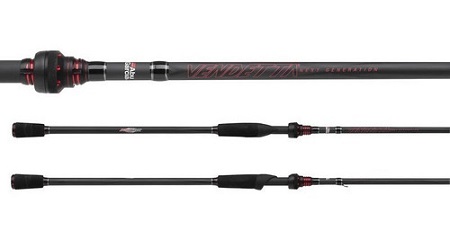

For each of the two rod types fits a stationary reel size 2000 – 3000. Below you will find two examples of inexpensive brand models, which should be sufficient for the beginning.

| Equipment | Price |
|---|---|
| Rod: Sänger Bionic Phase 3 Tele 40 | 27.99 € |
| Reel: Shimano Alivio DX Spin | 29.99 € |
| Rod: Shimano FX 2500 | 24.12 € |
| Reel: Daiwa Sweepfire 2500 | 25.93 € |
| Accessories | 90 € |
| Sum | 197.94 € |
10.2 How much does a beginner fishing rod or fishing equipment cost?
Let’s now take the two cheapest rods from our proposal, these two reels and an estimate of € 90.00 for the accessories such as landing net, line, hooks, etc.. With this basic fishing equipment for beginners, you can get by with thrifty use with about 200.00 €. And that for two decent rods with two equally decent reels.
11. How do you find your perfect fishing rod?
First of all, two basic decisions must be made.
- First, the question of what the rod will be used for: Are you thinking of an all-around model? Or should it be a specialized model for a particular type of fish or fishing technique?
- A cost limit, secondly, will usually exist as well.
The other decision filters may be:
- Freshwater or saltwater?
- Light, medium or heavy fishing?
- Fishing from boat or shore?
- Transport size important?
- Plug-in rod or telescopic rod?
- Stationary reel or multi reel?
A short example:
Next year we are going to Sweden in the summer to a freshwater lake with pike, zander and perch. The idea is to fish from the shore and buy only one suitable rod.
Decisions made: Freshwater fish (pike, walleye, perch), all-around rod and mainly spin fishing.
Procedure: Table 2 shows float and spinning rods for light (perch) to heavy fishing (pike) for pike, walleye and perch. So a workable compromise must be made. To do this, we did an intersection in Table 1. That would be about 2.70 m, CW medium, action 2 (better progressive) as well as a fast blank.

For spinning we would choose a rod about 2.70 m long with progressive action and a CW of 15 – 50 g. This is still light enough for perch – as well as heavy enough for a medium sized pike. Very big ones are not to be expected from the shore in summer. For zander this is also quite practical. With the rod length you could also use the set for float fishing near the shore and for night ground fishing for zander.
-

The Ultimate Fish Finder Guide
Download 40 pages for free now
Reviews ( 17 )
- Rated 5 out of 5
Raphaël G
Very effective. - Rated 5 out of 5
Vladimir M
The book describes the fish finder physics and builds up your understanding of how it actually works. I have yet to apply this knowledge with my Humminbird, but having that much of theory is extremely helpful in understanding and processing the sonar output. - Rated 5 out of 5
NICHOLAS JOHN REECY
The Deeper Guide was just what I was looking for. YouTube is full of reviews of the sonar but little in the way of education. I highly recommend for those wanting to better understand their Deeper sonar. - Rated 5 out of 5
Henrik
I am a beginner when it comes to fishing with fish finders. For me, the book has been very informative to judge the displays on the fish finder “realistically” and to recognize what limits there are when searching for fish with the fish finder. Now I know when I have to use my regular sonar and when I have to use my ClearVü or which settings I should apply to the device at which spot. I was impressed by the many illustrations, especially for understanding the functions. - Rated 5 out of 5
Dr. Manfred Marx
Very well written, so that it is understandable even for amateurs and structured concisely. - Rated 5 out of 5
Andreas Witz
An excellent book for learning about fish finders. - Rated 5 out of 5
AK
The ultimate fish finder guide is a beneficial introduction. I am excited to put into practice what I have learned. - Rated 5 out of 5
Lübbe Wolfgang
A well-written problem solver. - Rated 5 out of 5
Kalksee
The book is unmatched for understanding how a sonar/fish finder works. I was a fish arch hunter, and I suspect my fishing tactics will change. The book has clear writing, and you understand you understand a lot the first time you read it. I can only recommend it to anyone interested in technology. Thank you for this fantastic book! Thoralf - Rated 5 out of 5
Enrico Indelicato
I had absolutely no idea about fish finders. Since I read the book, I had a real Aha experience! For me, as a beginner, very detailed and uncomplicated explained. I can only recommend it! Best regards Enrico - Rated 5 out of 5
Udo
Reading this book has suddenly made my fish finders much more valuable to me! I realized that I made typical mistakes in interpreting the images, which I will now avoid. The authors use clear, understandable language and also explain the mathematical-physical basics very well. The fact that there is no advertising for one or another fish finder manufacturer has increased its credibility. At the same time, you get a solid impression of what is feasible today on this subject – and the “advertisements” of the manufacturers also helped. The book is ABSOLUTELY to recommend, because what good is an expensive fish finder if you too often draw the wrong conclusions from the obtained illustrations? In this respect, the money for the book is very well invested. - Rated 5 out of 5
Josef Weiss
I had to wait a long time for such great explanations. Thank you. - Rated 5 out of 5
Peter
It is a well-described, scientifically sound book highly recommended to anyone who wants to advance and doesn’t already know everything. - Rated 5 out of 5
Holger Just
Ich angle seit Jahren mit Echolot. Aber erstens bleibt man da irgendwann auf einer bestimmten Verständnisstufe stehen, diese konnte ich durch dieses Buch um einiges anheben. Als zweiten Aspekt mußte ich nach dem Lesen dieses Buches erkennen, dass ich durch “gefährliches Halbwissen” jahrelang Fehlinterpretationen hatte bzw. die Möglichkeiten meines Lotes nie richtig ausgenutzt habe. Also mein Fazit : Sehr empfehlenswert, die komplexen Zusammenhänge sind verständlich beschrieben. Das Buch ist ideal geeignet um sich in der angelfreien Zeit wertvolles Wissen für die folgende Saison anzueignen und beim Thema Echolot wieder uptodate zu sein. - Rated 5 out of 5
Matthias Wappler
Sehr gut!! - Rated 5 out of 5
M. Hermanns
Wer dieses Buch nicht liest, ist selber Schuld! Kein Vortrag, kein Presseartikel oder Bericht, Nein sogar keine Online-Schulung oder gar ein 365 Tage Support, vermittelt so viele essentielle Kenntnisse, wie dieses Buch. Nach zwei drei bebilderten Erklärungen wird dir klar, das ohne dieses Wissen, die Gewinn bringende Nutzung eines Echolotes gar nicht möglich ist. Beziehungsweise dir wird klar das du dein Echolot bisher sehr ineffizient genutzt hast und das dir eine Menge verborgen geblieben ist. Ich habe nach dem ersten gleich drei weitere Exemplare gekauft und drei guten Angelfreunden eine Anerkennung für unsere Freundschaft mit diesem Buch gemacht. Alle drei verfügen über 30 Jahre Bootsangelerfahrung und alle drei waren ebenfalls begeistert, jeder konnte sein Wissen deutlich erweitern. Deshalb freue ich mich auch so sehr auf das Zanderbuch welches hoffentlich noch vor dem Wochenende bei mir ist. Liebe Grüße weiter so. dermarc - Rated 5 out of 5
TACKLEFEVER
Das Buch beginnt mit rund 15 Seiten Technik Erläuterung bei der versierte Echolot Nutzer, zu denen ich mich zähle, vielleicht geneigt sind weiter zu blättern weil sie vieles schon wissen und Anfänger weiter blättern möchten weil es zu trocken scheint. Aber etwas Basiswissen gehört einfach dazu. Selbst wenn man als Anfänger bei der Basis Theorie weiter blättern will, sobald es um Chirp geht sollte “jeder” genauer hinschauen 😉 es lohnt sich. Und auch für mich fand ich noch ein zwei kleine Dinge die ich nicht wusste oder noch nicht im Zusammenhang mit anderem sah. Die weiteren Abschnitte (bis Kap. 3) befassen sich mit den verschiedenen Techniken der Geber, Bildschirme, oder dem Smartphone, dem Tablet als Anzeigemedium. Was mir bis dahin sehr positiv auffiel waren die “MERKE-Boxen”, kleine übersichtliche Passagen welche Kerninformationen des zuvor vermittelten Wissen zusammenfassend hervorheben. Auch wenn man nicht alles komplett verstanden hat, hilft diese leicht verständliche Zusammenfassung des voraus gegangenen Inhalts sehr. Kapitel 4 geht auf 2D, Down-Imaging, Side-Scan-Sonar ein, dabei ohne zu konkret auf einen Hersteller abzustellen was ich ebenfalls sehr positiv fand. Dem Angler wird der praktische Einsatz und das Verstehen dessen was man auf dem Echolot sieht erläutert. Fragen wie z.B.: Wo befindet sich der Fisch genau? Was ist eine Fischsichel? Wie setze ich das Echolot beim Vertikalangeln ein? Warum gibt es Vertiefungen obwohl man keine sieht und umgekehrt? Wie erkenne ich die Bodenbeschaffenheit? Fragen zur richtigen Deutung der Unterwasserstruktur, dem optimalen Bildlauf- und Boots- Geschwindigkeit, der Sprungschicht, usw. werden auch beantwortet. Würde ich alles aufzählen würde es hier zu weit führen. Es folgen noch kurze Infos zur Multibeam Technik und ein Kapitel “Die 3D Show mit Garmins Panoptix”. Hier wurde für mich zu wenig Wissen vermittelt, nur auf einen Herstellers gezeigt und nicht auf ähnliche Funktionen oder Techniken anderer Hersteller Bezug genommen. Ich hoffe es kommt in der nächsten Auflage mehr zu dem Thema. Am Ende des Buches kommen Infos rund um konkrete Einstellungen am Echolot. Hier wird einer der wichtigsten Punkte überhaupt behandelt und dies praxisnah und hilfreich. Aller spätestens jetzt lohnt sich das Buch für alle Neueinsteiger. Viel einfacher und kompakter geht es kaum. Ein paar wichtige zuvor besprochene Punkte zu Einstellungen bei bestimmten Echolot Funktionen werden erläutert und mit Checklisten im Kapitel “Die effektivsten Einstellungen beim Echolot auf einen Blick” zusammen gefasst. Hier lohnt es sich für Anfänger die Seiten besonders aufmerksam zu lesen und vielleicht als Kopie mit auf Boot zu nehmen. Damit fällt der Kampf mit den gefühlten tausenden von Einstellungen am Echolot auf dem Wasser leichter. Es klingt fast zu schön um wahr zu sein, aber tatsächlich scheint mir das Buch für Anfänger und Fortgeschrittene Anwender gleichermaßen gut geeignet zu sein. Manchmal suchte ich mehr Hintergrundwissen, weil der im Prinzip sehr gute Ansatz es für Anfänger leicht verständlich zu halten manche Herstellerabhängige Feinheiten außer Acht lässt. Das Buch hat eine gute Gliederung, fasst vieles kompakt zusammen und geht bei wichtigen Punkten auch meist für Fortgeschrittene etwas in die Tiefe. So richtet sich das Buch meiner Meinung nach nicht an wissenschaftliche Anwender, sondern an Echolot Neulinge indem es auch viele Basis Fragen beantwortet ebenso auch an Fortgeschrittene indem es auf diverse Punkte tiefer eingeht. Wenn ich den Sinn des Buches in einem Satz beschreiben sollte, dann wäre dies: Echolottechnik für Anfänger interessant und verständlich erklären und dabei auch ein wenig tieferes Wissen für alle zu vermitteln. Mir ist Stand Juni 2017 kein anderes Buch bekannt das diesen Ansatz so konsequent verfolgt. Ich hoffe ihr habt so viel Spaß beim lesen wie ich. Luke www.tacklefever.de
In the following tables you get the collected overview of the features of a fishing rod, which you should consider in your purchase decision. It should help you to make your own considerations when buying a fishing rod and make your choice easier. Table 1 is the basic table. The other two are target fish related or show special fishing techniques. In the other two we therefore refer to table 1.
The tables themselves do not claim to be complete. The values given are merely indicative and not to be taken as fixed quantities. Only numbers (or the letter p) are used for rod actions:
- 1 = tip action,
- 2 = moderate tip action,
- 3 = parabolic action and
- p = progressive action.

Table 1 by type of fishing rod (spinning, bottom, float and fly fishing):
| Type of fishing rod | Type of fishing | Action | Length (m) | Casting weight (g) | Bait | Fish species |
|---|---|---|---|---|---|---|
| Spinning rod | light | 1 | 1.80-2.40 | 5-20 | All types | All predatory fish, perches |
| medium | 2 | 2.00-2.70 | 20-40 | Artificial bait | Zander, tight, trout | |
| heavy | 2 | 2.70-3.00 | 40-100 | Salmon... | ||
| Pose rod | light | 1 | 3.00-6.00 | 2-15 | All types | All fish species |
| medium | 1-2 | 2.70-3.90 | 20-40 | Natural bait | ||
| heavy | 1-2 | 2.40-3.90 | 40-100 | |||
| Bottom fishing rod | light | 1-2 | 2.00-4.00 | 10-30 | Natural bait | All fish that take food from the bottom. |
| medium | 30-70 | |||||
| heavy | 2-3 | 80-120 | ||||
| Fly rod | 4-5 | 2.00-2.60 | WFTA | Artificial fly | All fish that eat insects from the water surface. | |
| 6-7 | 2.20-2.60 | |||||
| 8-9 | 2.60-3.30 |

Table 2 by target fish (whitefish, catfish, trout, carp, perch, pike, pikeperch, …)
| Fish species | Type of rod (see table 1) | Special fishing techniques |
|---|---|---|
| Whitefisch | Pose light Bottom light | Feeder, swing tip |
| Trout | Pose light-medium Spinning light Fly 4-5 | Scrubolino |
| Perch | Pose light Spinning light | Dropshot, vertikal, jerk |
| Zander | Bottom light-medium Pose mediuml Spinning light-medium | Dropshot, vertikal, jerk |
| Pike | Pose medium-heavy Spinning medium-heavy | Dropshot, vertikal, jerk |
| Carp | Pose medium Bottom medium-heavy | |
| Tench | Pose light-medium-heavy Bottom light-medium | |
| Eel | Bottom medium | |
| Catfish | Bottom heavy Spinning heavy | Vertical fishing |
| Cod, saithe, halibut | Boad rods 20/30/50 lbs | Pilking, jigging, trolling, spoon fishing |
Table 3 by fishing techniques (feeder, jigging, vertical…).
In recent years, some fishing techniques from the Anglo-Saxon area have become very popular in our country. Fishing with feeder and quiver are special techniques of bottom fishing, where the tip of the rod acts as a bite indicator. However, these techniques have been around longer.
- Jigging,
- Jerking or drop shot fishing,
- vertical fishing (near the bottom) and
- pelagic fishing (open water)
are special forms of modern spinning. All of these techniques present special requirements for the rod on the one hand, and on the other hand need a boat as a fishing platform. If you want to fish directly above the fish (vertical, pelagic), a fishfinder (ideally with SideScan technology) is also recommendable.
The rod characteristics for these types of spinning are very similar among themselves. Common characteristics include:
- Tip action,
- a fast blank,
- a strong backbone as well as
- the target fish of perch, zander and pike.
Some of these fishing techniques can also be applied to the big ones – e.g. vertical fishing for catfish or jigging in saltwater for pollock and cod – but then the harness must be designed significantly heavier (up to 220 g CW) than the table here indicates for the freshwater range.

| Fishing technique | Type | Action | Length (m) | Casting weight (g) | Bait | Table 1 |
|---|---|---|---|---|---|---|
| Feeder | light | 2, p | 3.30-3.50 | Natural bait | Bottom fishing | |
| medium | 2, p | 3.50-3.90 | ||||
| heavy | 2, p | 3.90-4.20 | ||||
| Quiver | 2, 3, p | 2.40-2.90 | 10-50 | Natural bait | Bottom fishing | |
| Jigging | 1, fast, good backbone | 2.70-3.00 | 30-40 | Plastic bait | Spinning | |
| Jerkbait | 1, fast, strong backbone | 1.80-2.20 | 30-80 | Jerkbaits and wobblers without scoop | Spinning | |
| Drop shot fishing | 1, strong backbone | 2.00-2.30 | 10-25 | Plastic bait | Spinning | |
| Vertikal | 1, stiff tip | 1.80-2.10 | 10-50 | Artificial bait | Spinning | |
| Pelagic | 1 | 1.80-2.20 | 20-60 | Artificial bait | Spinning |

12. Conclusion: Does a good fishing rod matter?
Even the best criteria for a suitable rod choice and all the resulting considerations are helpful for the subsequent purchase – but not completely sufficient. Only when you have had the rod in your hands and have been satisfied with its properties in practice, you will know that you have made the right decision. Hopefully, the information and assistance we have provided will help you doing so.
If you have any questions, additions or comments, please let us know: We look forward to your feedback. Have fun on your next fishing trip and “Petri Heil”! – Martin and Jens.
-

The Ultimate Fish Finder Guide
Download 40 pages for free now
Reviews ( 17 )
- Rated 5 out of 5
Raphaël G
Very effective. - Rated 5 out of 5
Vladimir M
The book describes the fish finder physics and builds up your understanding of how it actually works. I have yet to apply this knowledge with my Humminbird, but having that much of theory is extremely helpful in understanding and processing the sonar output. - Rated 5 out of 5
NICHOLAS JOHN REECY
The Deeper Guide was just what I was looking for. YouTube is full of reviews of the sonar but little in the way of education. I highly recommend for those wanting to better understand their Deeper sonar. - Rated 5 out of 5
Henrik
I am a beginner when it comes to fishing with fish finders. For me, the book has been very informative to judge the displays on the fish finder “realistically” and to recognize what limits there are when searching for fish with the fish finder. Now I know when I have to use my regular sonar and when I have to use my ClearVü or which settings I should apply to the device at which spot. I was impressed by the many illustrations, especially for understanding the functions. - Rated 5 out of 5
Dr. Manfred Marx
Very well written, so that it is understandable even for amateurs and structured concisely. - Rated 5 out of 5
Andreas Witz
An excellent book for learning about fish finders. - Rated 5 out of 5
AK
The ultimate fish finder guide is a beneficial introduction. I am excited to put into practice what I have learned. - Rated 5 out of 5
Lübbe Wolfgang
A well-written problem solver. - Rated 5 out of 5
Kalksee
The book is unmatched for understanding how a sonar/fish finder works. I was a fish arch hunter, and I suspect my fishing tactics will change. The book has clear writing, and you understand you understand a lot the first time you read it. I can only recommend it to anyone interested in technology. Thank you for this fantastic book! Thoralf - Rated 5 out of 5
Enrico Indelicato
I had absolutely no idea about fish finders. Since I read the book, I had a real Aha experience! For me, as a beginner, very detailed and uncomplicated explained. I can only recommend it! Best regards Enrico - Rated 5 out of 5
Udo
Reading this book has suddenly made my fish finders much more valuable to me! I realized that I made typical mistakes in interpreting the images, which I will now avoid. The authors use clear, understandable language and also explain the mathematical-physical basics very well. The fact that there is no advertising for one or another fish finder manufacturer has increased its credibility. At the same time, you get a solid impression of what is feasible today on this subject – and the “advertisements” of the manufacturers also helped. The book is ABSOLUTELY to recommend, because what good is an expensive fish finder if you too often draw the wrong conclusions from the obtained illustrations? In this respect, the money for the book is very well invested. - Rated 5 out of 5
Josef Weiss
I had to wait a long time for such great explanations. Thank you. - Rated 5 out of 5
Peter
It is a well-described, scientifically sound book highly recommended to anyone who wants to advance and doesn’t already know everything. - Rated 5 out of 5
Holger Just
Ich angle seit Jahren mit Echolot. Aber erstens bleibt man da irgendwann auf einer bestimmten Verständnisstufe stehen, diese konnte ich durch dieses Buch um einiges anheben. Als zweiten Aspekt mußte ich nach dem Lesen dieses Buches erkennen, dass ich durch “gefährliches Halbwissen” jahrelang Fehlinterpretationen hatte bzw. die Möglichkeiten meines Lotes nie richtig ausgenutzt habe. Also mein Fazit : Sehr empfehlenswert, die komplexen Zusammenhänge sind verständlich beschrieben. Das Buch ist ideal geeignet um sich in der angelfreien Zeit wertvolles Wissen für die folgende Saison anzueignen und beim Thema Echolot wieder uptodate zu sein. - Rated 5 out of 5
Matthias Wappler
Sehr gut!! - Rated 5 out of 5
M. Hermanns
Wer dieses Buch nicht liest, ist selber Schuld! Kein Vortrag, kein Presseartikel oder Bericht, Nein sogar keine Online-Schulung oder gar ein 365 Tage Support, vermittelt so viele essentielle Kenntnisse, wie dieses Buch. Nach zwei drei bebilderten Erklärungen wird dir klar, das ohne dieses Wissen, die Gewinn bringende Nutzung eines Echolotes gar nicht möglich ist. Beziehungsweise dir wird klar das du dein Echolot bisher sehr ineffizient genutzt hast und das dir eine Menge verborgen geblieben ist. Ich habe nach dem ersten gleich drei weitere Exemplare gekauft und drei guten Angelfreunden eine Anerkennung für unsere Freundschaft mit diesem Buch gemacht. Alle drei verfügen über 30 Jahre Bootsangelerfahrung und alle drei waren ebenfalls begeistert, jeder konnte sein Wissen deutlich erweitern. Deshalb freue ich mich auch so sehr auf das Zanderbuch welches hoffentlich noch vor dem Wochenende bei mir ist. Liebe Grüße weiter so. dermarc - Rated 5 out of 5
TACKLEFEVER
Das Buch beginnt mit rund 15 Seiten Technik Erläuterung bei der versierte Echolot Nutzer, zu denen ich mich zähle, vielleicht geneigt sind weiter zu blättern weil sie vieles schon wissen und Anfänger weiter blättern möchten weil es zu trocken scheint. Aber etwas Basiswissen gehört einfach dazu. Selbst wenn man als Anfänger bei der Basis Theorie weiter blättern will, sobald es um Chirp geht sollte “jeder” genauer hinschauen 😉 es lohnt sich. Und auch für mich fand ich noch ein zwei kleine Dinge die ich nicht wusste oder noch nicht im Zusammenhang mit anderem sah. Die weiteren Abschnitte (bis Kap. 3) befassen sich mit den verschiedenen Techniken der Geber, Bildschirme, oder dem Smartphone, dem Tablet als Anzeigemedium. Was mir bis dahin sehr positiv auffiel waren die “MERKE-Boxen”, kleine übersichtliche Passagen welche Kerninformationen des zuvor vermittelten Wissen zusammenfassend hervorheben. Auch wenn man nicht alles komplett verstanden hat, hilft diese leicht verständliche Zusammenfassung des voraus gegangenen Inhalts sehr. Kapitel 4 geht auf 2D, Down-Imaging, Side-Scan-Sonar ein, dabei ohne zu konkret auf einen Hersteller abzustellen was ich ebenfalls sehr positiv fand. Dem Angler wird der praktische Einsatz und das Verstehen dessen was man auf dem Echolot sieht erläutert. Fragen wie z.B.: Wo befindet sich der Fisch genau? Was ist eine Fischsichel? Wie setze ich das Echolot beim Vertikalangeln ein? Warum gibt es Vertiefungen obwohl man keine sieht und umgekehrt? Wie erkenne ich die Bodenbeschaffenheit? Fragen zur richtigen Deutung der Unterwasserstruktur, dem optimalen Bildlauf- und Boots- Geschwindigkeit, der Sprungschicht, usw. werden auch beantwortet. Würde ich alles aufzählen würde es hier zu weit führen. Es folgen noch kurze Infos zur Multibeam Technik und ein Kapitel “Die 3D Show mit Garmins Panoptix”. Hier wurde für mich zu wenig Wissen vermittelt, nur auf einen Herstellers gezeigt und nicht auf ähnliche Funktionen oder Techniken anderer Hersteller Bezug genommen. Ich hoffe es kommt in der nächsten Auflage mehr zu dem Thema. Am Ende des Buches kommen Infos rund um konkrete Einstellungen am Echolot. Hier wird einer der wichtigsten Punkte überhaupt behandelt und dies praxisnah und hilfreich. Aller spätestens jetzt lohnt sich das Buch für alle Neueinsteiger. Viel einfacher und kompakter geht es kaum. Ein paar wichtige zuvor besprochene Punkte zu Einstellungen bei bestimmten Echolot Funktionen werden erläutert und mit Checklisten im Kapitel “Die effektivsten Einstellungen beim Echolot auf einen Blick” zusammen gefasst. Hier lohnt es sich für Anfänger die Seiten besonders aufmerksam zu lesen und vielleicht als Kopie mit auf Boot zu nehmen. Damit fällt der Kampf mit den gefühlten tausenden von Einstellungen am Echolot auf dem Wasser leichter. Es klingt fast zu schön um wahr zu sein, aber tatsächlich scheint mir das Buch für Anfänger und Fortgeschrittene Anwender gleichermaßen gut geeignet zu sein. Manchmal suchte ich mehr Hintergrundwissen, weil der im Prinzip sehr gute Ansatz es für Anfänger leicht verständlich zu halten manche Herstellerabhängige Feinheiten außer Acht lässt. Das Buch hat eine gute Gliederung, fasst vieles kompakt zusammen und geht bei wichtigen Punkten auch meist für Fortgeschrittene etwas in die Tiefe. So richtet sich das Buch meiner Meinung nach nicht an wissenschaftliche Anwender, sondern an Echolot Neulinge indem es auch viele Basis Fragen beantwortet ebenso auch an Fortgeschrittene indem es auf diverse Punkte tiefer eingeht. Wenn ich den Sinn des Buches in einem Satz beschreiben sollte, dann wäre dies: Echolottechnik für Anfänger interessant und verständlich erklären und dabei auch ein wenig tieferes Wissen für alle zu vermitteln. Mir ist Stand Juni 2017 kein anderes Buch bekannt das diesen Ansatz so konsequent verfolgt. Ich hoffe ihr habt so viel Spaß beim lesen wie ich. Luke www.tacklefever.de
Could you take 1 Click to share your experiences?
We will be forever grateful. With your rating we can improve.
average rating 1.6 / 5. Number of ratings: 382
Be the first to rate this post!


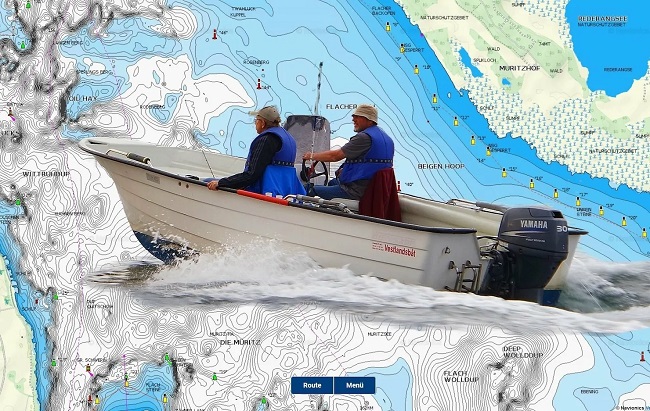
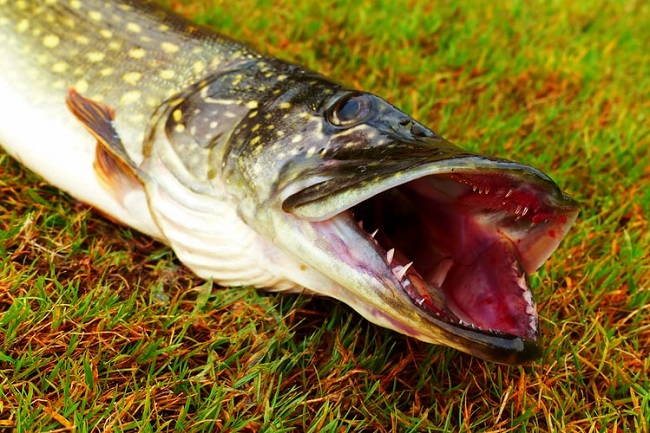
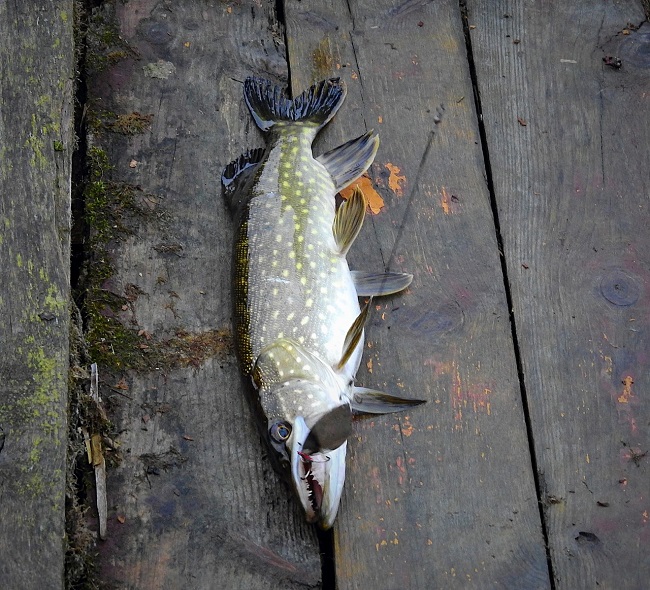

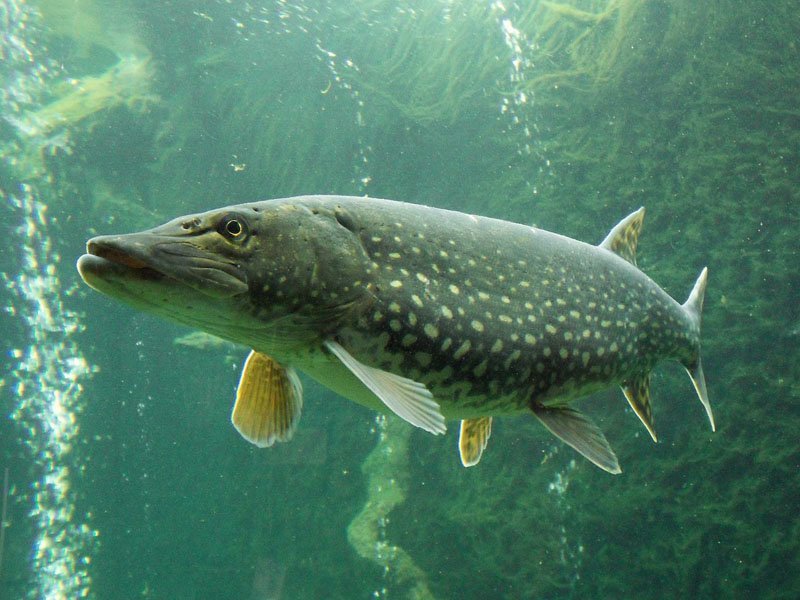

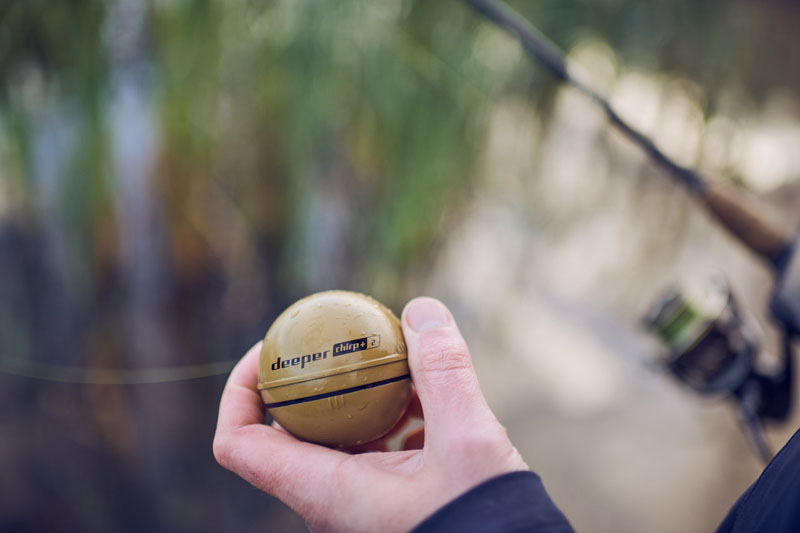




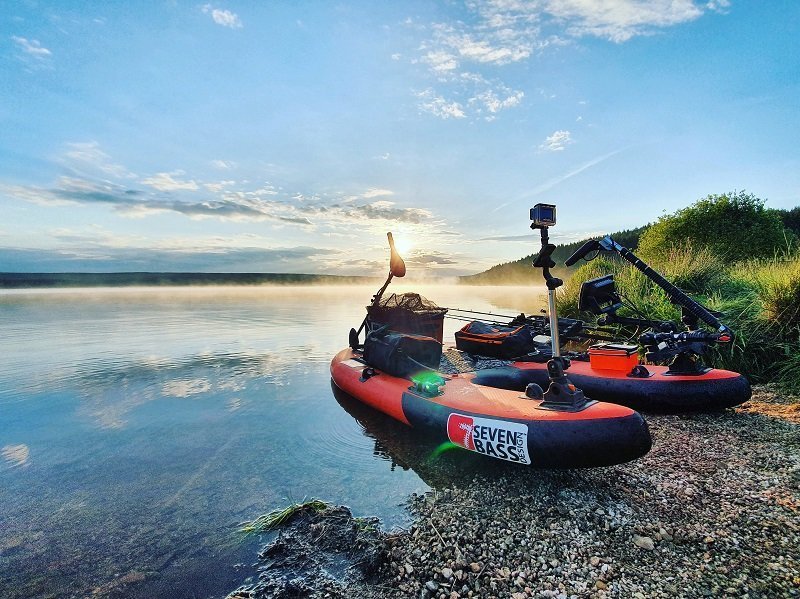

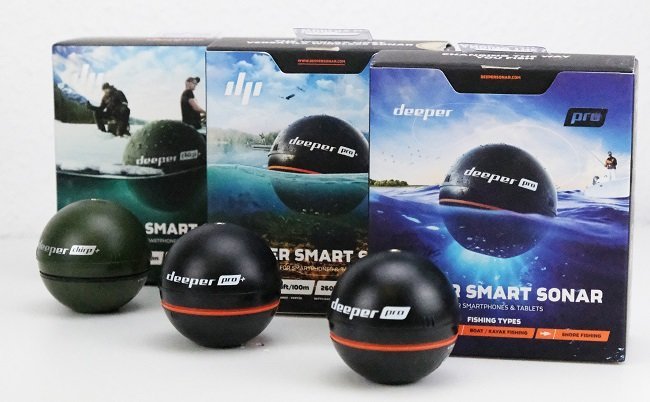

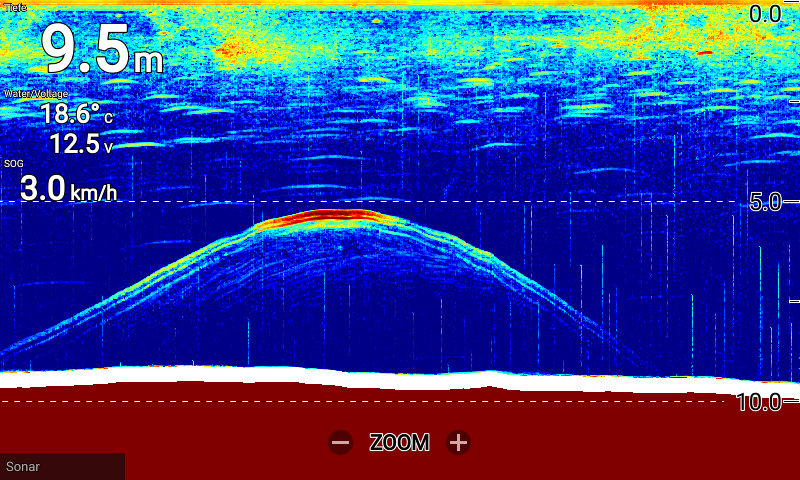
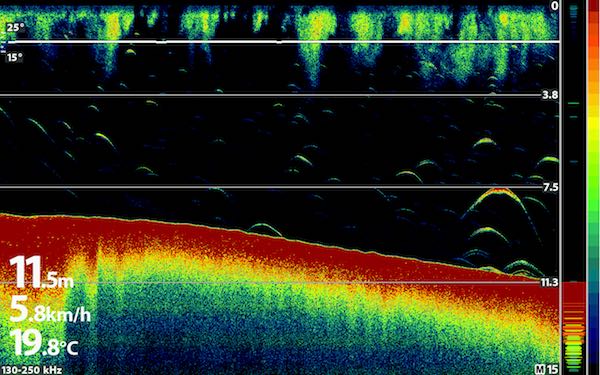
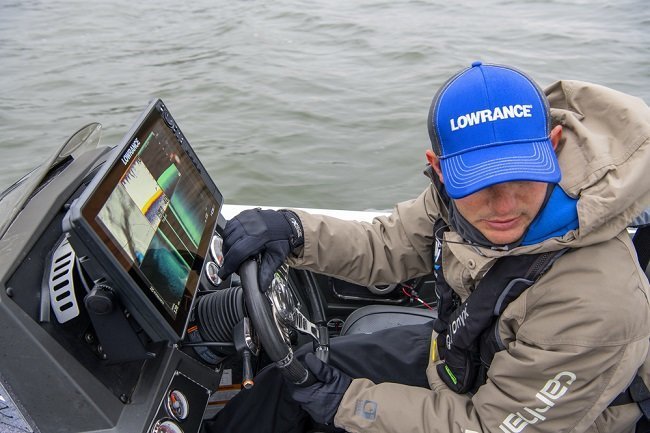

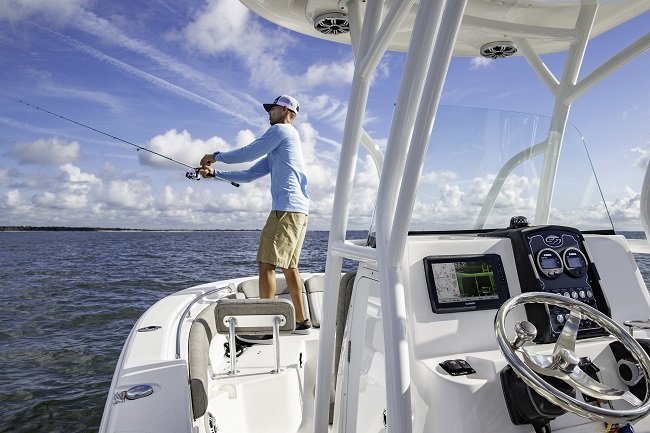

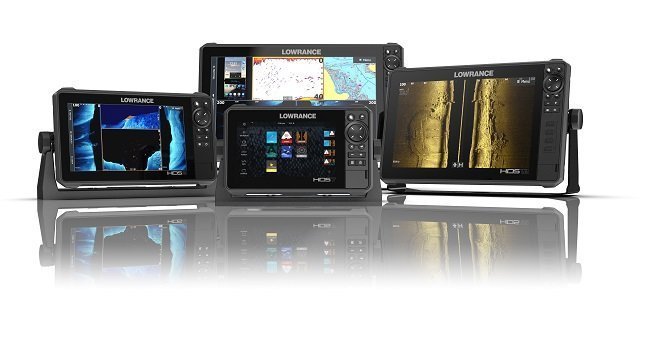
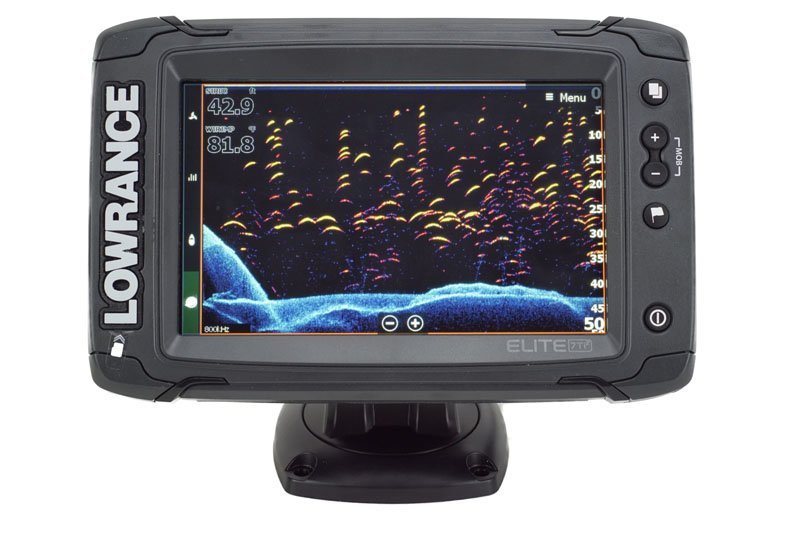
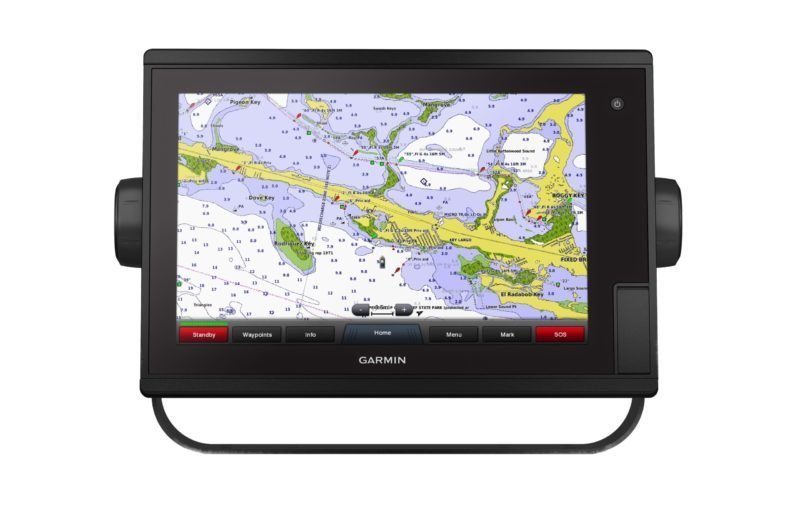
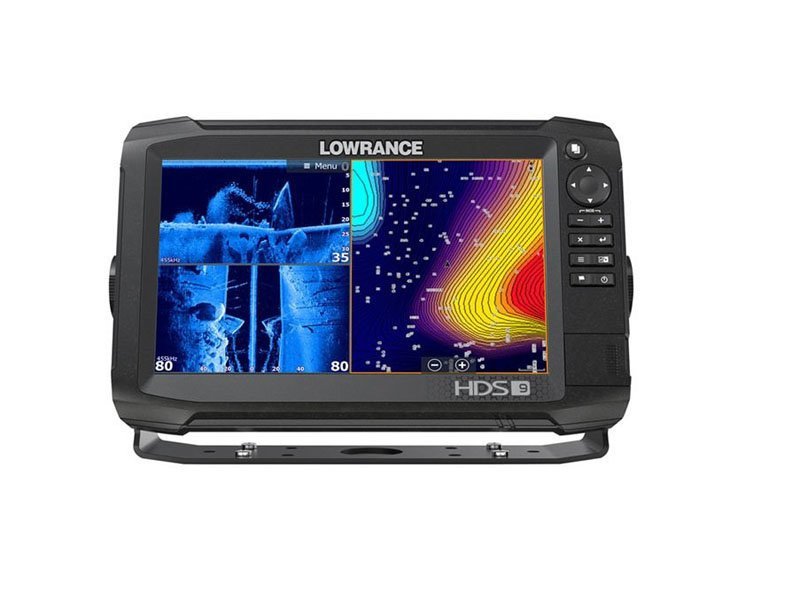


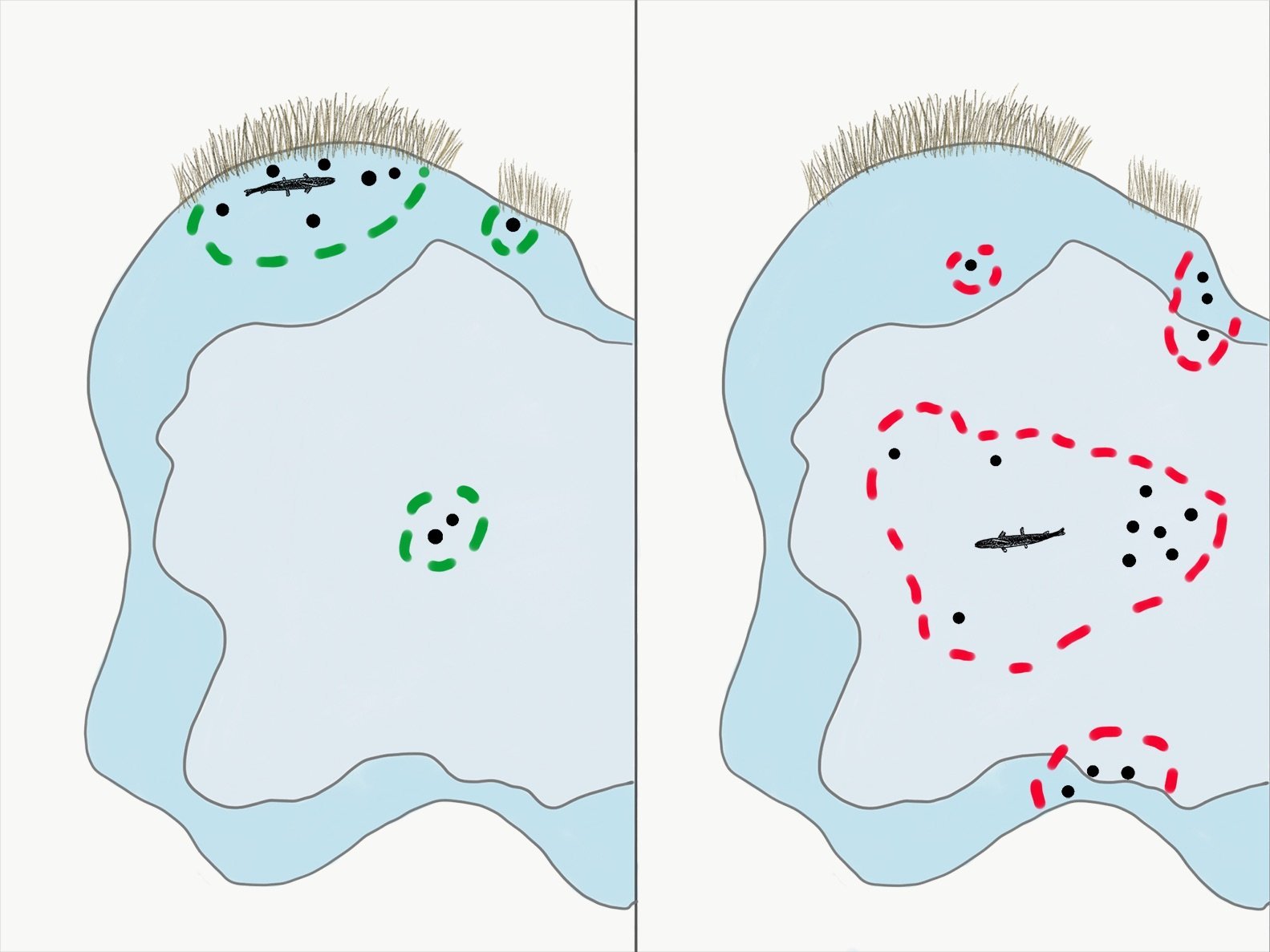




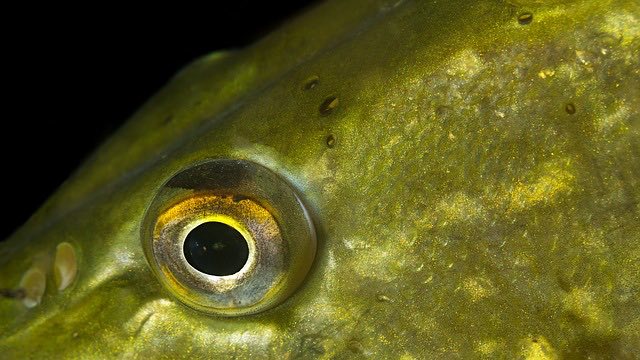


Raphaël G
Vladimir M
NICHOLAS JOHN REECY
Henrik
Dr. Manfred Marx
Andreas Witz
AK
Lübbe Wolfgang
Kalksee
Enrico Indelicato
Udo
Josef Weiss
Peter
Holger Just
Matthias Wappler
M. Hermanns
TACKLEFEVER